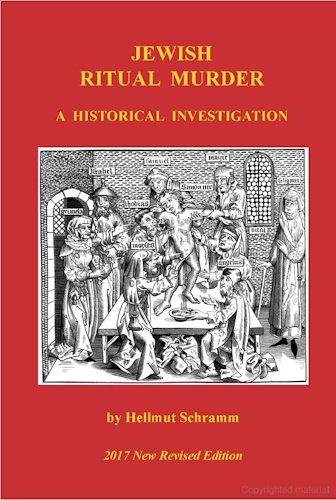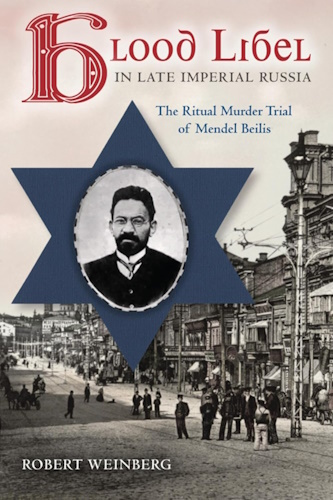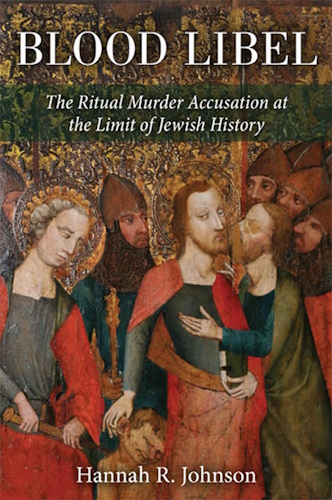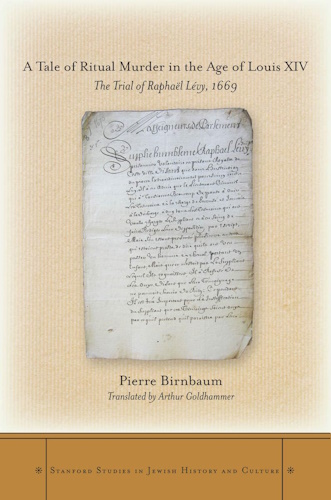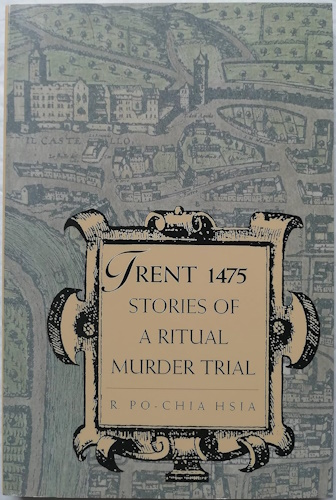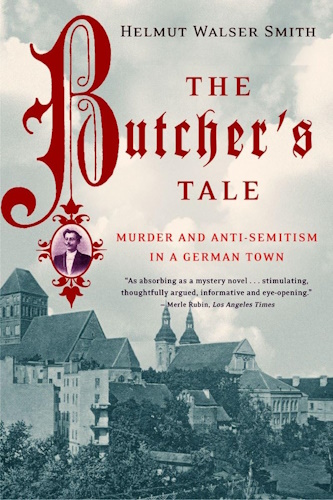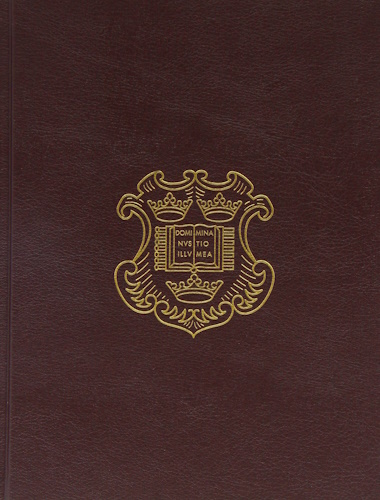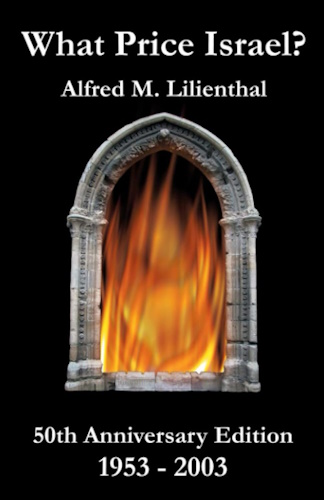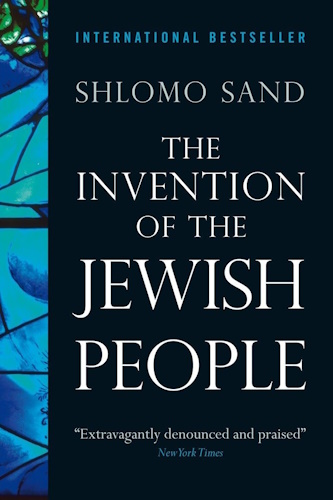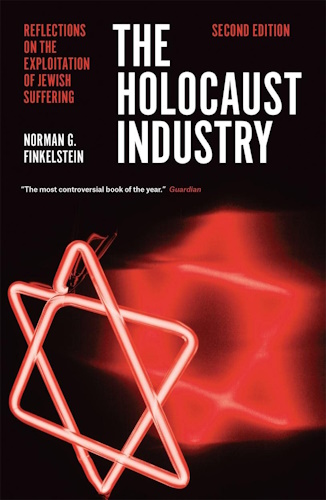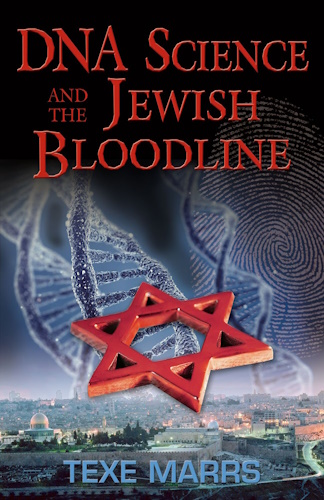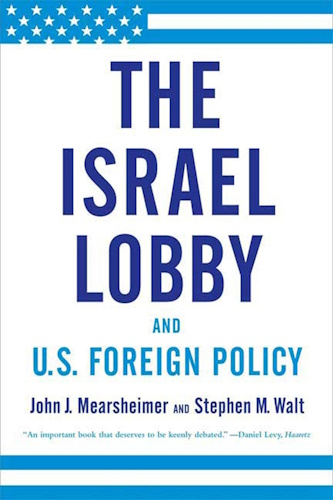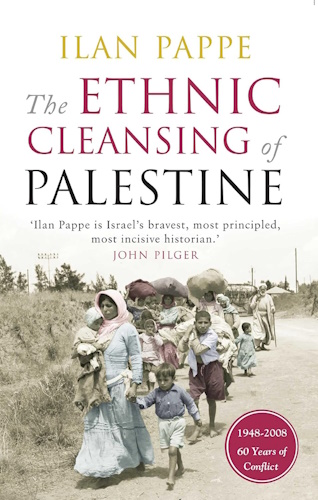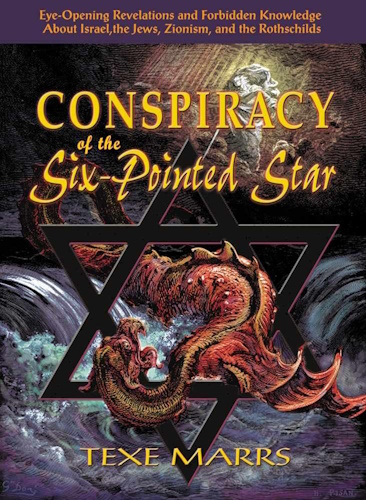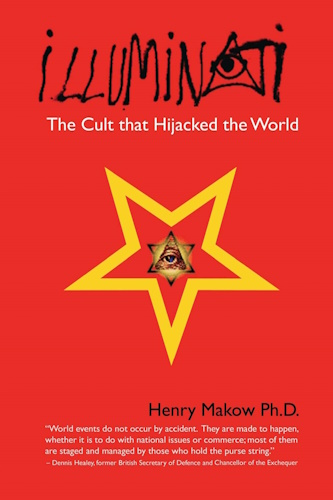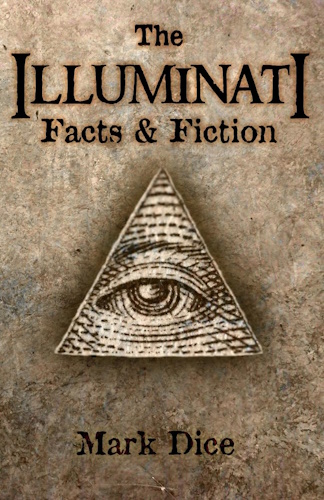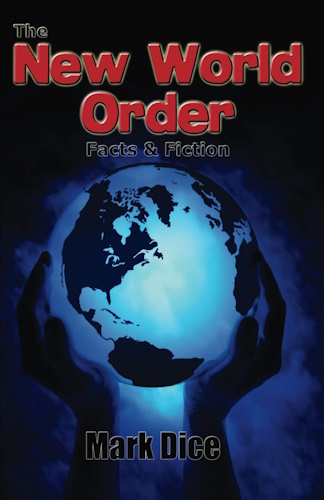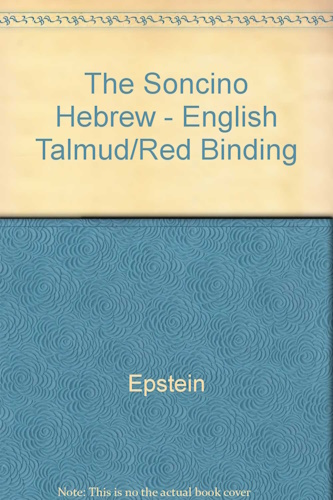![]()
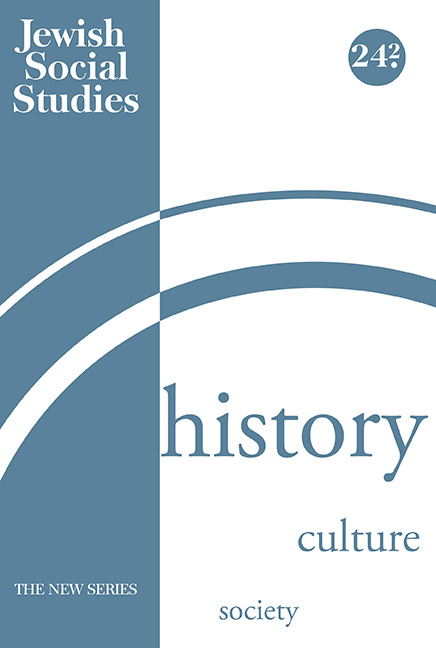
"The Vengeance of the Jews Was Stronger Than Their Avarice":
Modern Historians and the Persian Conquest of Jerusalem in 614
by Elliott Horowitz
Jewish Social Studies - Volume 4, Number 2
Published by: Indiana University Press
Retrieved from: Archive.org
![]()
"The Jews are the mildest of men, passionately hostile to violence. That obstinate sweetness which they conserve in the midst of the most atrocious persecution, that sense of justice and of reason which they put up as their sole defense against a hostile, brutal, and unjust society, is perhaps the best part of the message they bring to us and the true mark of their greatness." Thus wrote Jean-Paul Sartre in his 1946 Reflexions sur la question juive, published two years later in English under the title Anti-Semite and Jew, a work he later admitted to have written "without reading one Jewish book."1 Sartre's reflections on the "Jewish question" and, in particular, his essentialist (and some might say racist) remarks on the Jewish character have elicited various responses in the half-century since they were published, some implicit and some overt, some mild and some passionate.2 Harold Rosenberg, for example, noted upon the book's appearance in English that "Sartre has cut the Jews off from their past," and he alleged that "Sartre has consciously permitted himself to accept the anti-Semite's stereotype of the Jew. His disagreement with anti-Semitism reduces itself to arguing that these Jewish traits...are not so bad."3 More recently, Elaine Marks has argued that "Sartre is transformed in the third part of his essay into the antisemite against whom he rails in the first part."4
Sartre's essay, which sought to combat European antisemitism, seems, rather ironically, to have perpetuated a number of its stereotypes, including those of the Jew's "obstinate sweetness" and passionate hostility to violence, stereotypes that may arguably be seen as the modern equivalent of the Jew's alleged effeminacy. Since medieval times, and especially in the early modern era, it had been widely asserted that Jewish men menstruate monthly, a charge that has been perceptively interpreted by Yosef Yerushalmi as suggesting implictly that "Jewish males . . . are, in effect, no longer men but women, and the crime of deicide has been punished by castration."5 Other scholars have linked the charge of male menstruation with the truncated (and thus less virile) phallus of the circumcised Jew.6
In modern times the Jew's allegedly effeminate character has received different kinds of expression. Late in the eighteenth century, as John Efron has noted, Abbé Grégoire could remark that Jewish men "have almost all red beards, which is the usual mark of an effeminate temperament," and late in the nineteenth, as Sander Gilman has noted, the controversial German theologian David Friedrich Strauss could comment on the "especially female" nature of the Jews.7 Gilman and, before him, George Mosse have pointed to the "increasingly intense anti-Semitic critique" in nineteenth-century Europe, "of the Jewish body as inherently unfit for military service" and the association in that century of Jewish males with nervousness and traditionally female hysterical tendencies.8 Gilman has also shown how the feminized view of the Jewish male was internalized even by such figures as the Viennese rabbi and scholar Adolf Jellinek, who wrote in 1869: "In the examination of the various races it is clear that some are more masculine, others more feminine. Among the latter the Jews belong."9
As a particularly relevant precursor to Sartre's feminization of the Jews, we may cite Jules Michelet, France's foremost historian in the nineteenth century, who had asserted that the God of the Hebrew Bible always preferred "the weak over the strong," and thus preferred Jacob, "delicate and sweet ['fin et doux'] like a woman" over "the valiant Ishmael and the strong Esau."10 Michelet also wrote that "one could not believe one word" of the massacres alleged by the biblical narrator to have been perpetrated by the Hebrews upon the tribes of Canaan, for "their numerous servitudes rendered them far removed . . . from the warrior's life of the Arabs and their glorification of carnage."11 Although he made a point of stating for the record "j'aime les Juifs" ("I love Jews"),12 this was certainly a back-handed compliment, as was the later observation by the great French Orientalist Ernest Renan that the Jews "are full of pity for the poor fools who pass their life cutting each other into pieces, instead of enjoying the pleasures of a peaceful life as they do."13 Note, by contrast, the pointed words of the Jewish legal historian Jean Juster in his magisterial work on the Jews in the Roman Empire, at the conclusion of his chapter on Jewish criminality: "All the crimes which a man commits," he wrote in 1914, "Jews committed as well."14 Can these words, written just before their author's untimely death in World War I, not be read as a covert attempt to re-masculate the feminized Jews? And could they not have been read with profit, three decades later, by Sartre?
Across the channel, an important precursor to Sartre was the great Victorian historian and essayist William Lecky (1838-1903), who wrote of his Jewish contemporaries, in an otherwise generally sympathetic essay: "Nothing is more conspicuous among them than their unhealthy colouring, their frail, bent, and feeble bodies. . . . Their nervous organization is extremely sensitive, and . . . they are very liable to insanity and to other nervous and brain disorders." The Dublin-born and educated historian of European rationalism and morals acknowledged that "many Jews no doubt serve in the great continental armies with honour," but he confidently asserted that "the Jew is naturally a pacific being, hating violence and recoiling with a peculiar horror from blood."15
Lecky, in contrast to Sartre, had read a number of "Jewish books," among them Henry Hart Milman's History of the Jews (first published in 1829). Upon Milman's death, Lecky wrote an eloquent essay, asserting that "very few historians have combined in a larger measure the three great requisites of knowledge, soundness of judgement, and inexorable love of truth."16 Milman (1791-1868), an Eton and Oxford (Brasenose) educated don and divine whose father had been physician to George III, eventually became dean of St. Paul's in London (1849). His "epoch-making" History of the Jews was written during the decade in which he was professor of poetry at Oxford (1821-31).17 Lecky (and thousands of other readers between 1830 and 1930) would have read therein, concerning the early fifth century alone, of the "furious collision" that occurred between Christians and Jews after "great, and probably not groundless, offence" was taken by the former "at the public and tumultuous manner in which the Jews celebrated the feast of Purim"; of the violent death, upon a cross, of a Christian child in Inmestar, Syria ("some drunken Jews began, in the public streets, to mock and blaspheme the name of Christ. They went so far as to erect a cross, and fastened a Christian boy to it, whom they scourged so unmercifully that he died"); and of the nocturnal massacre of Christians by Jews in Alexandria that prompted the latter's expulsion from the city by the Archbishop Cyril.18
One of the more striking passages in Milman's work (from which the quotation in the title of this article is taken) concerns Jewish violence against the Christians in Jerusalem after the Persian conquest of the city in 614:
It had come at length, the long-expected hour of triumph and vengeance; and they did not neglect the opportunity. They washed away the profanation of the holy city in Christian blood. The Persians are said to have sold the miserable captives for money. The vengeance of the Jews was stronger than their avarice; not only did they not scruple to sacrifice their treasures in the purchase of these devoted bondsmen, they put to death all they had purchased at a lavish price. It was a rumour of the time that 90,000 perished.
"Every Christian church," added Milman, "was demolished; that of the Holy Sepulchre was the great object of furious hatred."19 His assertion that in 614 "the vengeance of the Jews was greater than their avarice" was highly significant, for, as Gavin Langmuir has noted, Milman, like many of his contemporaries, had seen avarice as the essence of the Jew, for whom "to acquire largely, whether fairly or not, was the highest ambition."20 The nineteenth-century stereotype of the feminized Jew was evidently potent enough to allow someone as learned as Lecky, who had read and praised Milman's work,21 to describe the Jew as "naturally a pacific being, hating violence and recoiling with a peculiar horror from blood."
If in nineteenth-century Europe writers such as Lecky could distinguish sharply between the ready capacity of pre-modern Jews for bloody vengeance and the hatred of violence that characterized contemporary Jews, then this dichotomy was far less obvious to Western observers in nineteenth-century Jerusalem. The engineer Ermete Pierotti, who spent eight years in Palestine during the mid-nineteenth century, noted that the Protestants of Jerusalem "call the Greeks and the Latins heretics, idolaters, heathen; and they stir up still worse feelings by sermons in which they ridicule their services, their processions, their worship of the Virgin and the Saints." Pierotti offered a similar observation about the Jews, who "do not show more moderation when speaking of their oppressors . . . and revenge their injuries when they get a chance."22
Pierotti's remark would seem to echo the famous words placed by Shakespeare into the mouth of Shylock ("And if you wrong us, shall we not revenge? If we are like you in the rest, we will resemble you in that"),23 words that clash rather dissonantly with the comments of Lecky and Sartre on the Jew's hostility to violence. But whether or not Pierotti consciously alluded to Shylock's speech, his remark is buttressed by other reports from nineteenth-century Jerusalem. For example, following the arrival in 1841 of Jerusalem's first Anglican bishop, the Jewish-born and bred Michael Solomon Alexander (né Pollack), tensions between Jews, Anglican missionaries, and missionized Jews began to erupt into violence; in October 1842 three European-born Jews who had expressed interest in conversion were forced to seek shelter, fearing "personal violence in consequence of having declared their belief in Christianity."24 In addition, the artist William Bartlett reported that, shortly after his return to Jerusalem in 1853, a clergyman connected with the Anglican Mission "in the exercise of a zeal certainly more fervent than prudent . . . had repaired to the Jewish quarter, to preach the Gospel in the open street." Shortly after he began to speak "certain of the Rabbis . . . instigated their followers to drive him from the spot with a storm of stones and dead cats." Bartlett's sober judgment of the missionary's "zealous" action is quite striking: "However disgraceful this violence, it was surely not a little imprudent thus to arouse the fanaticism of the Jews."25
Revenge, violence, and fanaticism were words used by these Christian observers to describe Jewish behavior in Jerusalem--not in the seventh century but in the nineteenth. In fact, certain key events of the past seem to have served as prisms through which those of the present were regarded. Dominant among these were the aforementioned acts of violence against Christians and their churches during the Persian conquest of Jerusalem in 614. Reciprocally, living in nineteenth-century Jerusalem could help to open one's eyes to the capacity of the Jews for religious violence in the distant past.
Milman's fellow Etonian and younger Cambridge colleague, the Reverend George Williams (1814-78), accompanied Bishop Alexander to Jerusalem in 1841, where he then spent two years. Shortly afterwards, he published The Holy City: Historical and Topographical Notices of Jerusalem, a revised and expanded edition of which appeared in 1849. In his work, for which he received a medal for literary merit from the king of Prussia, Williams wrote that in 614 "the usual horrors attendant on the sacking of a city by a barbarian army were enhanced by the malice of the Jews." He continued,
[The Jews] had followed the Persians from Galilee, to gratify their vengeance by the massacre of the believers, and the demolition of their most sacred churches. They were amply gutted with blood. In a few days 90,000 Christians of both sexes, and of all ages and conditions, fell victims to their indiscriminating hatred.26
As we shall see, Jewish contemporaries of Williams described the events of 614 rather similarly. A century later, however, in the years following the Holocaust, memories of Jews gratifying their vengeance and giving vent to their "indiscriminating hatred" began to fade, being displaced increasingly by the Sartrean Jew, "passionately hostile to violence." This was especially true in works dealing with the Holocaust itself. In The Informed Heart (1960), Bruno Bettelheim wondered aloud whether the Nazi notion "that millions of Jews . . . would submit to extermination did not also result from seeing how much degradation they would accept without fighting back."27 A year later Raul Hilberg, in The Destruction of the European Jews, asserted that "preventive attack, armed resistance, and revenge are almost completely absent in two thousand years of Jewish ghetto history. Instances of violent opposition, which may be found in one or another history book, are atypical and episodic."28 In the "revised and definitive edition," published in 1985, Hilberg deleted the latter of the two sentences quoted above, but changed the first only slightly.29 Even as late as 1992, Anita Shapira could claim in her Land and Power (more picturesquely titled in Hebrew Herev ha-yonah) that aversion to force was an essential dimension of Jewish identity in pre-Zionist times. "Over the course of generations," she wrote, "the aversion to force among Jews took on the proportions of a Jewish trait, distinguishing them as a distinct community from their neighbors." In Shapira's view "this mindset did not disappear with the appearance of a Jewish national movement. The Jewish self-image as a people abhorring violence in any form was too deeply rooted in the national psyche to be easily dismissed."30
Both Hilberg and Shapira, as part of their very different agendas, present a monolithic view of a mythic Jewish past in which abhorrence of violence was deeply ingrained in the Jewish self-image. While Shapira is keenly aware of the breakdown of this self-image around the turn of the twentieth century, she seems not to have seriously considered the possibility that the image itself was a relatively modern construct. Yet a re-examination of the record of Jewish religious violence against Christians and the external manifestations of their religion during the millennium after the Christianization of the Roman empire under Constantine31 (an examination that cannot be pursued here in either depth or detail)32 would reveal patterns of behavior very much at variance with the alleged historic self-image of the Jews "as a people abhorring violence in any form."
The remainder of this article is devoted to one of those instances of revenge that may be found, as Hilberg noted, in "one or another history book": Jewish violence against Christians and their churches in Jerusalem after the Persian conquest of the city in 614. As we shall see, what is found in one history book is often quite different from what is found in another, especially if the two were written in different centuries or by members of different faiths.33 Although the Jews of Palestine undoubtedly participated in the widescale violence against Christians and their houses of worship in 614, their precise role has been open to keen debate. Differences of opinion, however, have often revolved less around what actually happened than around how much should be told and how. Different narrative and rhetorical strategies are, in the end, what most distinguish the various positions. I will focus here on various versions of the events of 614 produced in the nineteenth and twentieth centuries (both by scholars inside the academy and by those outside it), although the emphasis, as in Agnon's novel Shirah, shall be less on the distant Byzantine past than on those who shaped it.
Sine ire et studio?
In 1946, the same year in which Sartre's controversial essay first appeared, Michael Avi-Yonah, then assistant curator at the Rockefeller Archaeological Museum in Jerusalem, published his Hebrew study of the Jews of Palestine under Roman and Byzantine rule, Bi-ymei Roma u-Vizantiyon, which subsequently went through five editions and was eventually translated into both German and English. Although the book undoubtedly still sold fewer copies than Sartre's Reflexions sur la question juive, the Lemberg-born and London-educated Avi-Yonah shared one thing with the French existentialist philosopher: a decided reluctance (or inability) to acknowledge the Jewish capacity for vengeful violence. And although he announced in the introduction to his book (written, as he acknowledged, "by a Jew about Jews") that "polemics with enemies of our people are right and proper in the present, but a historian should approach the past sine ire et studio," Avi-Yonah sometimes had trouble obeying his own precept. Concerning the many reports of Jewish participation in the massacre of Christians after the Persian conquest of Jerusalem, for example, Avi-Yonah had the following to say: "Christian writers, including modern ones, have much to tell about the cruelty with which the Christians in Jerusalem were treated by the Jews. Such complaints have one basic source--the opinion that Jews have eo ipso less rights than Christians, and that the latter are allowed to do what is forbidden to the former."34
This alleged double standard seems to have provided Avi-Yonah with the justification for omitting from his narrative (in contrast to such predecessors as Heinrich Graetz and Simon Dubnow) not only the highest figures cited by chroniclers of the total number of Christian victims in 614 but also the lowest. And it seems to have permitted him to cite in his text only the lower estimate of the number of Christian captives brought to the Mamilla Pool (as Michael Ish-Shalom noted), while relegating to an endnote the generally accepted (five-fold) higher estimate.35The allegation on the part of several chroniclers that the captives were bought by Jews and then massacred (which later prompted Milman's assertion that "the vengeance of the Jews was stronger than their avarice") was omitted even from the notes.
The reluctance to recognize the Jewish capacity for violence seems, in the cases of both Sartre and Avi-Yonah, to have been nourished rather than engendered by the Holocaust, in the latter stages of which both works were begun. In Sartre's case the Holocaust seems to have strengthened a long-standing antisemitic stereotype, whereas in Avi-Yonah's case it seems to have hardened an incipient apologetic tendency that, as we shall see, had entered Jewish Byzantine historiography coterminously with the rise of Nazism and that continued to exercise enormous influence during the postwar years. After the reunification of Jerusalem in 1967, this apologetic tendency became even more pronounced among professional as well as non-professional Israeli historians for reasons that shall be discussed at the end of this article.
The Byzantine Chroniclers
Although the early-seventh-century Chronicon Paschale referred to the conquest of Jerusalem as "a calamity which deserves unceasing lamentations," its anonymous author was, as one historian noted, "as brief on this sad event as may be."36 More characteristic of the seventh-century Byzantine accounts were those of the Armenian bishop Sebeos and the Palestinian monk Antiochus Strategos of Mar Saba. The former, in his History of Heraclius, wrote that "when the Persians approached Palestine, the remnant of the Hebrew people rose against the Christians. They committed great crimes out of national zeal and did many wrongs to the Christian community."37 Those "great crimes" and "many wrongs" were described in considerable detail by the eye-witness Strategos in his Capture of Jerusalem, the Georgian text of which fills 66 large octavo pages of 33 lines each.38 Strategos devoted particular attention to the massacre perpetrated by the Jews in "the reservoir of Mamel [the Mamilla Pool]" after thousands of Christians were confined there by the conquering Persians:
Thereupon the vile Jews . . . rejoiced exceedingly, because they detested the Christians, and they conceived an evil plan. . . . And in this season then the Jews approached the edge of the reservoir and called out to the children of God, while they were shut therein, and said to them: "If ye would escape from death, become Jews and deny Christ; and then ye shall . . . join us. We will ransom you with our money and ye shall be benefited by us." But their plot and desire were not fulfilled . . . because the children of Holy Church chose death for Christ's sake rather than to live in godlessness. . . . And when the unclean Jews saw the steadfastness of the Christians and their immovable faith, then they were agitated with lively ire . . . and thereupon imagined another plot. As of old they bought the Lord from the Jews with silver, so they purchased Christians out of the reservoir. . . .
How many souls were slain in the reservoir of Mamel! How many perished of hunger and thirst! How many priests and monks were massacred by the sword! . . . How many maidens, refusing their abominable outrages, were given over to death by the enemy! How many parents perished on top of their own children! How many of the people were brought up by the Jews and butchered, and became confessors of Christ! . . . Who can count the multitude of the corpses of those who were massacred in Jerusalem!39
Strategos, for one, thought he could. He cited a total number of 66,509 Christian corpses, of which 24,518 were allegedly found at Mamilla, many more than were found anywhere else in the city.40 Eutychius (d. 940), the Melkite patriarch of Alexandria, later wrote that the Jews, together with the Persians, had killed "an incalculable number of Christians," whose bodies were later found "in the place called Mamilla," but he cited no numbers.41 The author of the Khuzistan Chroniclestressed rather the Jewish attacks upon Jerusalem's churches, claiming that Jews had set fire to them all.42 Other, later chroniclers, such as the Greek Theophanes (d. ca. 818), cited numbers of Christian dead as high as 90,000,43 which became a favorite among modern historians (Jewish as well as Christian) although it was often cited with polite skepticism. And although the veracity of the claim by Strategos (and later Theophanes) that Jews purchased Christian captives and then butchered them has been challenged by many scholars, it has been taken quite seriously, even in recent years, by leading Byzantinists such as A. N. Stratos and Cyril Mango (the Bywater and Sotheby Professor of Byzantine and Modern Greek Language and Literature at the University of Oxford).44
Early in the eighteenth century, the Huguenot historian Jacques Basnage, following Theophanes, asserted that after Jerusalem's conquest the Jews purchased Christian prisoners from the Persians "to satisfy their hatred" and that "ninety thousand persons perished by their hands upon that occasion."45 Later in the century Edward Gibbon, by contrast, stated more cautiously (though not more accurately) that "the massacre of ninety thousand Christians is imputed to the Jews and Arabs [sic], who swelled the disorder of the Persian march."46 Milman, who both edited Gibbon's Decline and Fall and wrote his biography, wrote similarly in History of the Jews that "it was a rumour of the time that 90,000 perished."47 On the other hand, Milman's fellow divine (and fellow Etonian) George Williams wrote, with considerably less skepticism, that "in a few days 90,000 Christians of both sexes, and of all ages and conditions, fell victims" to the Jews' "indiscriminating hatred."48
The Nineteenth Century Confronts the Seventh
Both Milman and Williams referred to the "hatred" ("furious" according to former, "indiscriminating" according to the latter) that drove the Jews of early-seventh-century Palestine to acts of "vengeance" against the Christians of Jerusalem and to the spilling in the Holy City of great quantities of blood, and both cited only one estimate (90,000) of the number of Christian dead. In citing that number, the highest offered by any Byzantine chronicler, and in speaking openly of Jewish vengeance in 614, they were matched by two of the greatest Jewish scholars of the nineteenth century, Salomon Munk and Heinrich Graetz, both of whom had been born in Central Europe and trained at German universities.
The Silesian-born Munk (1803-67), who was later praised by Graetz as having "possessed all the virtues of the Jews without their faults," was a distinguished Orientalist who eventually succeeded Renan to the professorship of Semitic languages at the CollÅge de France. He published his Palestine: Description gégraphique, historique, et archéologique in 1845, the same year in which Williams's study of Jerusalem first appeared. Concerning the conquest of Jerusalem in the early seventh century, Munk wrote that the Persian army was accompanied by 26,000 Jews, who upon reaching the Holy City "took revenge upon the Christians for the cruel persecutions and many humiliations they had suffered over the centuries. It is claimed that 90,000 Christians perished."49 In a footnote, however, Munk dismissed the claim that these had been first bought by the Jews as slaves, on the grounds that so large a number of prisoners would not have let themselves be butchered without resistance.
Similarly, Graetz, then lecturer at Breslau's Jewish Theological Seminary, wrote in 1860: "Ninety thousand Christians are said to have perished in Jerusalem but the story that the Jews bought the Christian prisoners from the Persians, and killed them in cold blood, is pure fiction."50 Graetz, who implicitly admitted that Jews had played a major role in the massacre, felt impelled to add that "only in the heat of battle or intoxicated by the rites of conquest would they have been capable of doing to their mortal enemies what the latter would have done had they been victorious. In a period when religion clouded men's minds and desiccated their hearts, humaneness was not to be found in any of the religious camps."51 He went on to assert unflinchingly that "the Jews relentlessly destroyed the Christian sanctuaries. All the churches and monasteries were burnt down, and the Jews undoubtedly had a greater share in this deed than did the Persians."52 This was not all that different from what Williams had written just over a decade earlier, except that Graetz's words elicited an immediate defensive reaction on the part of their author: "Had not Jerusalem, the original possession of the Jews, been torn from them by violence and treachery? Were they not obliged to consider that the holy city was foully desecrated by the adoration of the cross and of the bones of the martyrs as by the idolatries of Antiochus Epiphanes and Hadrian?"
The contrapuntal style of Graetz's discourse on Jewish violence against Christians and their sanctuaries in seventh-century Jerusalem reflects not only the historian's deep personal engagement with his material 53 but also his unwillingness to sweep Jewish religious violence under the rug, or to dismiss, as would many later Jewish historians, all Christian accounts thereof as tainted by bias.54 In Sartre's comments on the Jew's "obstinate sweetness" and passionate hostility to violence, both Graetz and Munk would probably have recognized an echo of the less-than-complimentary remarks concerning Jewish docility and lack of virile virtues expressed by their nineteenth-century contemporaries. In fact, their openness to discussing Jewish vengeful violence in the distant past may have stemmed, like that of Juster decades later, not only from scholarly integrity but also from a desire to counter the image of the feminized Jew and to re-masculate their ancient coreligionists.
Early Twentieth Century
In his honest and eloquent treatment of the events of 614, Graetz was closely followed by Simon Dubnow. Although the latter explicitly rejected the number of 90,000 Christian dead as an exaggeration, he acknowledged that "in hostile acts toward the Christians, the Jews did not lag behind the Persians." Dubnow then added, with a touch more pathos than Graetz, that "the bitter resentment that had accumulated in the oppressed people for centuries had now found an outlet in atrocities. In Jerusalem and in other cities, the Jewish detachments killed or banished the monks, and demolished churches and monasteries with the same frenzy the Byzantine mob had shown previously in sacking Jewish synagogues."55 Despite these words of apology, Dubnow clearly acknowledged that Jews had engaged "in hostile acts toward the Christians" and had even committed "atrocities."
Similar in this regard was the philo-Semitic English scholar, James Parkes (the hundredth anniversary of whose birth has recently been celebrated). In his path-breaking reexamination of early-medieval Jewish-Christian relations, The Conflict of the Church and the Synagogue: A Study in the Origins of Antisemitism(published in the year following Hitler's rise to power), Parkes did not flinch from discussing the question of Jewish involvement in the massacre of Christians after the Persian conquest of 614. "The popular story, which is repeated in most of the chroniclers," he wrote, "is that the Jews purchased 90,000 Christian prisoners from the Persians for the pleasure of putting them to death." Like Graetz, Parkes rejected the claim that the Jews had purchased Christians for the purpose of slaughtering them, and like the former he was also willing to acknowledge that they had engaged in anti-Christian violence on a massive scale: "That Jews took part in the attack upon Jerusalem and in the massacres and destruction of churches which followed, it would be difficult to disbelieve. They had every reason to hate the Christians and to exult in the destruction of the Christian buildings of the city."56
These words, it should be stressed, were written by an ordained Anglican priest (albeit one who once recommended P. T. Moon's Imperialism and World Politics for Lenten reading) who shared with Sartre a deep interest in the causes of antisemitism, and whose work, which focused on the religious (and specifically, Christian) roots of Jew-hatred, might have been profitably consulted by the latter.57 In an important article published in the year following the appearance of Parkes's book, Joshua Starr, one of Salo Baron's first students at Columbia, also acknowledged the "irreconcilable hostility" between Jews and their Christian neighbors during the final decades of Byzantine rule in Palestine, noting that "there was . . . no dearth of violent forms of hostile expression on both sides."58 Yet he, too, as we shall see below, could not fully acknowledge the extent of Jewish violence against Christians in the late sixth and early seventh centuries.
The first signs of historiographical stonewalling appear in another work published in 1935: Samuel Klein's history of the Jewish community in Palestine from the close of the Talmud until modern Zionism. The Hungarian-born Klein (1886-1940), who was professor of the historical topography of Palestine at the Hebrew University (after having served for 20 years as a rabbi in Bosnia and Slovakia), made no mention in his book of the conquest of Jerusalem in 614 or of the anti-Christian violence that ensued. Klein did cite the report by the seventh-century apostate Jacob that the Jews of Acre had forced a Christian priest to convert, but he dismissed the testimony as unreliable on the grounds that "the Jews in Palestine were then persecuted, and certainly would not have dared to do such a thing."59 Klein could just as well have argued that because the Jews were persecuted they were motivated to do such a thing, but writing in 1935 he may have had before his eyes the modes of response of Central European Jewry, among whom he had served as a rabbi for many years, to their most recent persecutors. Four years later (and a year before his death) Klein anounced that he would soon be publishing (in Zion) an article on Jewish participation in the Persian conquest of Jerusalem, but it never appeared.60
Even-handed assessments, like those of James Parkes and Joshua Starr, of the reciprocal role of violence in Jewish-Christian relations were to become increasingly rare in post-Holocaust Jewish historiography, both in the land of Israel and in the Diaspora. One important exception, which in certain ways proves the rule, was Joseph Braslavski's study, Milhamah ve-hitgonenut shel yehudei Erets-Yisrael, published during World War II by the press of the United Kibbutz Movement.61Although Braslavski (later Braslavi) was, like the older Samuel Klein, primarily a historical geographer and had also been educated in Berlin, their two books could hardly be more dissimilar in their respective treatments of Jewish violence against Byzantine Christians in late antiquity.
On a Saturday afternoon in the summer of 1940, the year of Klein's death, Braslavski was on his way from En Harod to deliver a lecture at the neighboring kibuts Tel Yosef but found himself in a situation well known to many--he had not yet chosen a topic. The one that suddenly appeared in his head became the title of the book he published three years later, the same year in which the Haganah first clashed with British forces at kibuts Ramat ha-Kovesh. As his opening reference to the book's conception following the fall of France made clear, Braslavski was not interested in the subject merely for antiquarian reasons; he was searching for a "usable past." "In these trying times for the Jewish settlement [in Palestine]," he wrote, "it is worthy and desirable to raise up from our obscure past in this land instances of self-defense, bravery, and self-sacrifice," especially during those periods in which the Jews enjoyed no political autonomy.62
Braslavski, who had served in the Turkish Army during World War I, was interested in demonstrating that even after the failed Bar-Kokhba revolt the Jews of Palestine continued to actively resist their enemies, and he called upon his readers to learn from their brave example: "If the remains of a people . . . could find the inner strength to struggle for their survival, then a people reborn, returning to build their historic homeland, should certainly be capable thereof." This present-minded posture created a number of challenges for the author, among them the delicate question of what to do about the massacre of 614 and the events surrounding it.
Rather than racing embarrassedly through the bloody narrative of death and destruction in 614, Braslavski devoted more than seven pages to the painful story and to a critical analysis of its sources. Although he somewhat naively denied the possibility that anyone (even in the seventh century) would purchase captives in order to kill them rather than to sell them as slaves, he did assert unequivocally that "the Jews of Palestine undeniably participated most zealously" in the massacre of Jerusalem's Christians. In explaining their motivation, Braslavski made a point of citing the Italian historian Pernice, who wrote that "in a single day the Jews avenged themselves against their eternal enemies, the Christians, for centuries of servitude, hatred, and persecution."63 Thus, even during the dark days of the Holocaust a common historiographical view of the events of 614 could still unite Palestinian Jews and European Christians.
After Auschwitz
In the post-Holocaust years, however, this consensus began to unravel as Jewish historiography concerning the degree of Jewish involvement in the violence of 614 (and attitudes toward the historical relationship between Jews and violence in general) took a decidedly new turn. The clearest indicator is Michael Avi-Yonah's aforementioned 1946 study of the Jews of Palestine under Roman and Byzantine rule. In discussing the 614 conquest of Jerusalem, Avi-Yonah, whose account relied heavily upon the recently re-edited apocalyptic midrash Sefer Zerubavel,64 stated rather tersely that "there was much killing, plunder, and destruction" in Jerusalem, without specifying, however, by whom. And in sharp contrast to Graetz, who was willing to assert that "the Jews undoubtedly had a greater share" in the burning of Jerusalem's churches and monasteries than did the Persians, Avi-Yonah suggested that only the latter had participated in the destruction of Christian places of worship.65
This strategy of denial also served Avi-Yonah well with regard to related events, such as the murder and mutilation by Antioch's Jews of the patriarch Anastasius II in the first decade of the seventh century, or the expulsion of the city's Jews in the final decade of the sixth after one of their coreligionists was accused of urinating on an image of the Virgin Mary.66 Neither the murder nor the expulsion were included in Bi-ymei Roma u-Vizantiyon or in any of the subsequent editions or translations. In H. Z. Hirschberg's important review of the first edition, he noted the brevity and superficiality, but not the apologetic bias, of Avi-Yonah's treatment of the late Byzantine period in general and of Jewish "cooperation" with the Persians in particular.67
Avi-Yonah was perhaps extreme,68 but hardly unique, in this post-Holocaust apologetic tendency. Another Galician-born historian, Salo Baron, writing on the other side of the Atlantic, did mention the late-sixth-century expulsion of the Jews from Antioch in the revised edition of his Social and Religious History of the Jews, but he laced his account with subtle doses of lachrymosity--despite his famous (and repeated) critiques of that tendency in earlier Jewish historiography. Baron referred rather one-sidedly to the "humiliating punishment meted out to their entire community for the transgression of a single coreligionist" but buried deep in a Baronian-length footnote the information that the said coreligionist "had at one time insulted the image of the Virgin Mary," and he gave no hint as to the precise nature of the insult.69 Baron thus allowed (or constructed) his narrative to suggest that the local Byzantine-Christian authorities simply had it in for Antioch's Jews. Moreover, by thus presenting the 592-93 expulsion as cruelly arbitary, he was able to put a rather positive spin on the "sanguinary riot" (not "bloody massacre"!) that the Jews of Antioch "staged" in 610, during which they "killed the patriarch." According to Baron, this was part of the "score" the Jews had "to settle" with the local authorities for their earlier expulsion--a score that could look quite different to anyone who knew that the "humiliating punishment" had been assigned the Jews after one of their coreligionists had allegedly urinated on an image of the venerated Virgin. Rather than challenge the accusation, Baron, like his student Joshua Starr two decades earlier, chose simply to sanitize the transgression.70
Although both Graetz and Braslavski had omitted the alleged urination on the image of the Virgin and the subsequent expulsion of the Jews from Antioch, neither minced words about the manner in which its Jews had behaved in 610. According to the former, the Jews "fell upon their Christian neighbors . . . and retaliated for the injuries which they had suffered; they killed all that fell into their hands, and threw their bodies into the fire, as the Christians had done to them a century before. The Patriarch Anastasius, an object of special hate, was shamefully abused by them, and his body dragged through the streets before he was put to death." What I have called Graetz's "contrapuntal" style allowed him to speak openly of Jewish violence against Christians so long as he could present such actions as having been justified or provoked. Thus, before describing the bloody events of 610 during which the Jews "were carried away to a deed of brutal violence," he confidently asserted that "the arbitrariness of the officials and the arrogance of the clergy must have [first] caused intolerable suffering among them."71
Graetz was understandably vague about the precise nature of the provocation he posited, but later historians, especially Samuel Krauss, were willing to fill in the lacuna with the assertion that the emperor Phocas (r. 602-10) had issued a decree requiring the Jews to be forcibly baptized. This assertion was based on the dubious testimony of pseudo-Dionysius of Tel-Mahre in the late eighth century, the relevant section of whose chronicle was first published in 1894. Early in our century, Krauss first linked the otherwise (to him) inexplicably violent behavior of Antioch's Jews with the alleged decree of Phocas, a view later accepted by James Parkes. "In reaction against the order for their compulsory baptism in the reign of Phocas," the latter wrote, "the Jews broke into a riot, and seizing the Patriarch Anastasius, murdered him with every brutality and dragged his body through the streets."72
In his treatment of the matter, Parkes combined Krauss's view with Graetz's contrapuntal style--referring to the Jews' brutal murder of the patriarch and mutilation of his body (based on Theophanes) after first asserting that they had been reacting to a compulsory baptism decree. By contrast, Joshua Starr, writing a year later, rejected the testimony of the widely deprecated pseudo-Dionysius that Phocas had issued such a decree.73 This would seem to explain why he made no mention of so central an event as the murder and mutilation by Jews of the patriarch of Antioch. Without being able to point to a justifiable motive, it would have been uncomfortable for a Jewish historian, especially after the rise of Nazism, to mention such a crime. Even Graetz had to posit some "intolerable suffering" that had been caused the Jews by the "arbitrariness of the officials and the arrogance of the clergy."
The murder of Anastasius also went unmentioned, as noted above, in Avi-Yonah's 1946 study of Palestinian Jewry under Roman and Byzantine rule, although Antioch certainly fell within its geographical purview. Baron, though he shared Starr's doubts about the alleged forced conversion decree under Phocas, was willing to report that in their 610 riots the Jews of Antioch had "killed the patriarch," but unlike Graetz (whom he accused of lachrymosity), Parkes, or Braslavski before him, Baron did not mention the mutilation by Jews of the former's body, even in a footnote. This may well have been for reasons of propriety. According to one modern translation of the passage in Theophanes, "the Jews of Antioch . . . disemboweled the great Patriarch Anastasius, and forced him to eat his own intestines"; according to another, "they hurled his genitals into his face."74
Nevertheless, it is difficult to avoid the sense that Baron, like Jewish historiography in the United States in general during the mid-1950s, was caught in a rather apologetic mood while composing the sixteenth chapter of his Social and Religious History.75 His brief treatment of the 614 Persian conquest of Jerusalem provides perhaps the best illustration. Although by the mid-1950s Avi-Yonah had conceded that "according to the lowest estimate" 30,000 Christians had been slain in Jerusalem,76 Baron avoided citing any numerical estimate of the number of Christian dead, stating only that the Persians deported "some 37,000 Christian inhabitants," and that "many more thousand Christian captives were sold to the Jews, who allegedly slew all those who refused to adopt Judaism."77
The placing of the word "allegedly" is quite significant. Did Baron really have grounds for believing that the testimony regarding the sale of Christian captives to the Jews was more trustworthy than that concerning the massacre of the former by the latter? In contrast to Munk and Graetz, who accepted the historicity of the massacre but explicitly rejected that of the prior purchase of captives, Baron was more confident that Jews had purchased Christian captives than that they had slain them. Moreover, after citing the latter allegation, he added: "More circumspectly, Eutychius spoke of Jews together with the Persians killing innumerable Christians." Baron neglected, however, to inform his readers that the more "circumspect" testimony of the Egyptian bishop Eutychius (d. 940) was three centuries later than that of the Palestinian monk Strategos, who alleged that Jews had purchased Christians and then killed them. Baron, who followed Avi-Yonah in utilizing the Hebrew Sefer Zerubavel (which made no mention of the massacre of Christians) as a source for the events of 614 and their aftermath, argued even more forcefully than Avi-Yonah that "Persians rather than Jews were responsible for the carnage," on the grounds that the failure to bury the corpses "ran counter to Jewish practice" and accorded with that of the Zoroastrians.78 Readers of both historians (as opposed to their nineteenth-century precursors) could come away with the impression that during the massacre of 614 not a single Jew had shed a drop of Christian blood.
In 1961, the same year in which Hilberg first published Destruction of the European Jews, the second volume of Léon Poliakov's History of Anti-Semitism appeared in its original French edition. Readers of the latter would probably have found him in agreement with the former's assertion that "preventive attack, armed resistance, and revenge are almost completely absent in two thousand years of Jewish ghetto history." In discussing Christian-Jewish relations in the seventh century, Poliakov noted that when the Persians had attacked Jerusalem in 614 "the local Jews had allied themselves" with them, but he remained silent concerning the consequences of that alliance for the local Christian populace. However, he did note that "after the Byzantine reconquest in 629, the Christians had taken cruel revenge." Only in a footnote did Poliakov add that "according to Byzantine chroniclers the Jews had slaughtered the Christians after the arrival of the Persians,"79 thereby suggesting that this information was far less reliable than that concerning the Christians' later "cruel revenge" against the Jews, mentioned in the body of his text. Although over a century earlier his countryman, the great Salomon Munk, had written that in 614 the Jews "took revenge upon the Christians for the cruel persecutions and many humiliations they had suffered over the centuries," Poliakov like Hilberg (but unlike Shakespeare) apparently had difficulty associating the Jews with revenge--except as its victims.
Ancient History in the Service of the Modern State
From the United States and Europe, let us return to the original site of the events we have been discussing. In 1965, four years after the publication of Hilberg's and Poliakov's aforementioned volumes, two books appeared in Israel on the subject of Christians in the Holy Land that dealt with the events of 614 in diametrically different ways. In his Short History of Christianity in the Holy Land, Saul (Paul) Colbi noted laconically that during the Persian conquest of Jerusalem in 614 "most of its Christian inhabitants were done to death [sic] [and] churches were burnt down." Dr. Colbi, who had put his Roman training in Canon Law to use as head of the "Christian desk" in Israel's Ministry of Religious Affairs since 1948 (a matter not mentioned in his book), omitted any mention of the Jewish alliance with the conquering Persians of which Braslavi, among others, had been so proud. He did note, however, the "deep hatred" that the Monophysite Christians allegedly harbored for their Orthodox coreligionists who had long discriminated against them, and the "vindictiveness" that had prompted the former "to side openly with the Persians." Readers of Colbi's book (whose bibliographical list was headed by Avi-Yonah's Bi-ymei Roma u-Vizantiyon) could reasonably have concluded that the Persians' primary accomplices in the massacre of Jerusalem's Christians were the vindictive members of the Monophysite minority.80 Whereas Jewish vengeance played no role in Colbi's brief narrative of the events of 614, Michael Ish-Shalom's 1965 anthology of Christian travel writing from the Holy Land included a frank discussion of Jewish involvement in the atrocities of the Persian conquest and even mentioned the alleged 90,000 Christian dead.81 Ish-Shalom reiterated his version of Jewish violence against Christians during the Persian conquest in a subsequent volume published a decade later, but he proved, like Braslavi before him, to be little more than a voice in the Judaean wilderness. His was not the version of 614 that was to achieve recognition in the semi-official publications of the Jewish State.
In The Jews in Their Land, the volume conceived and edited by David Ben-Gurion after his retreat to Sdeh Boker, Benzion Dinur, the well-known Hebrew University professor who had also been Ben-Gurion's minister of education (1951-55), took it upon himself to describe the Jewish role in the Persian conquest of Palestine in 614 and in the subsequent rule of Jerusalem: "It appears that they greatly assisted the conquest, fighting in the Persian ranks . . . in special battalions," which "took part in the storming of Jerusalem." As a consequence, Dinur asserted, "for three years the Jews were apparently in full control of Jerusalem; recalcitrant Christians were firmly held in check, many apostates were sentenced to death as idolators, and materials were gathered for the rebuilding of the new Temple."82 Dinur, like Avi-Yonah before him, rather uncritically relied upon Sefer Zerubavel for information about Jewish control of Jerusalem and plans to rebuild the Temple. Although he conceded that Jews were only "apparently in full control" of the city, he neglected to mention the thousands of Christians who were no less "apparently" slaughtered and their houses of worship that were no less "apparently" razed according to the Byzantine sources cited above. Instead, the former director of Yad Vashem told his readers euphemistically, in language that might have offended him if used with regard to Jews, that "recalcitrant Christians were firmly held in check." Death appears in Dinur's 1966 account of 614 only as the punishment to which "many apostates were sentenced . . . as idolators."
The tendency in Israeli historiography, both academic and popular, to ignore the slaughter of Jerusalem's Christians in 614 and/or the Jewish role therein only strengthened after the city came under exclusive Jewish rule as a consequence of the Six Day War. Dr. Colbi (of the Ministry of Religious Affairs) published an expanded version of his Short History in 1969 under the title Christianity in the Holy Land: Past and Present, but he saw no reason, even after the appearance of Ish-Shalom's book, to expand the section dealing with 614.
A similarly titled book that appeared in the same year-- Jerusalem: Past and Present, edited by Naftali Arbel (with an introduction by R. J. Z. Werblowsky, then dean of the Hebrew University's Faculty of Humanities)--was also quite reticent regarding the events of 614. Although Arbel's book was clearly reaching out to a Christian audience (it included a picture of Pope Paul VI kissing the Stone of Appointment), it had only the following to say about the Persian conquest of the city in 614: "Chosroes took Jerusalem, and many of its fine buildings were razed."83 No mention was made of the ecclesiastical character of those buildings, nor of the thousands of Christian casualties.
In 1969 another important publication appeared that was even more closely linked with the Hebrew University: the three-volume History of the Jewish People, written by six members of its faculty and edited by the medieval historian H. H. Ben-Sasson. Shmuel Safrai, Ben-Sasson's colleague in the Jewish History department and author of the section on the "era of the Mishna and Talmud," included therein a rather selective discussion of the events of 614 that, like those of Avi-Yonah and Dinur, clearly privileged the Hebrew Sefer Zerubavel over the more numerous Christian sources. Safrai quoted from the chronicle of the Armenian bishop Sebeos that "the remnants of the Jewish people rose against the Christians" and made common cause with the Persians against them, but he deleted the bishop's aforementioned assertion that the Jews "committed great crimes out of national zeal and did many wrongs to the Christian community."84 Instead, he wrote that after receiving control over the city (a matter mentioned only by the visionary Sefer Zerubavel) the Jews "proceeded with the expulsion of the Christians and the removal of the churches." Not a word was said concerning Christian casualties in the volume from which thousands of Israeli high school and university students have learned about their nation's past.
The treatment of the events of 614 was somewhat more candid in perhaps the most influential of the post-1967 spate of illustrated books on Jerusalem: Teddy Kollek and Moshe Pearlman's Jerusalem: Sacred City of Mankind (1968), which was subsequently translated into French, German, Italian, and Spanish. Pearlman had been director of the Israel Broadcasting Service and then of the Government Information Service during the period in which Kollek, the reunited city's first mayor, had been director of the prime minister's office. Their terse account of the violence in 614 reads, not surprisingly, like a government press release: "With the capture of Jerusalem, many Christians were killed and churches destroyed and damaged."85 The authors mentioned the sad fate of the city's Christians, but they did not indicate how many were killed, nor by whom, nor who destroyed their churches.86
Readers during the late 1960s hungry for more information could have turned, for example, to Jacques Boudet's extensively illustrated Jerusalem: A History, which bore the Nihil obstat authorization of the Roman Catholic Church. There they would have read that, in 614, "assisted by the Israelites who were bent on revenge for the humiliation of Byzantine domination, the [Persian] soldiers massacred, looted, and set fire to churches and convents."87 Boudet used the term "revenge" with regard to Jewish conduct in 614, as had both Jewish and Christian historians quite routinely in the nineteenth century, but in the latter half of the twentieth such words began to disappear from the discourse of Jewish historians when describing the conduct of their coreligionists.
Although the first volume of the Entsiklopedyah ha-ivrit appeared in 1953, its twentieth, containing an entry of more than 120 pages on "Jerusalem," appeared in 1971, four years after the city's reunification during the Six Day War. The subentries on Roman and Byzantine Jerusalem were written by Avi-Yonah, by then professor at the Hebrew University, who also contributed the sections on Roman and Byzantine Jerusalem to the parallel entry in the Encyclopaedia Judaica, which came out around the same time. In both of Avi-Yonah's post-1967 entries, as in Kollek and Pearlman's book, we read that the Persian army besieged Jerusalem in 614 "with the help of its Jewish allies" and that the Jews vanish mysteriously from the narrative just after the conquest: "The city wall was breached, many inhabitantswere slain, and the patriarch Zacharias and the 'True Cross' were taken into exile," wrote Avi-Yonah in the Encyclopaedia Judaica, revealing the precise identity of neither the slayers nor the slain. The Jews reappear in his narrative only after the bloodshed, to receive (as Sefer Zerubavel suggests) rule, albeit brief, over of the city. Mamilla appears in the Encyclopaedia Judaica's entry on Jerusalem only in the section on "water supply," where it is tersely noted that the Mamilla Pool is "first mentioned in the Byzantine period," but no mention is made of the context.88
Avi-Yonah's Hebrew University colleague David Flusser contributed the entries on "Antioch" in both the Entsiklopedyah ha-ivrit and the Encyclopaedia Judaica. Whereas in the former, published in 1954, he acknowledged that the Jews had attacked Christians and killed the patriarch Anastasius in the rioting that had, in his view, been provoked by the forced baptism decree of Phocas, in the latter Antioch's Jews are merely "alleged to have attacked the Christians . . . and killed the patriarch" (my emphasis).89 Similarly, in a series of studies on Byzantine Jewry published between 1955 and 1971, Andrew Sharf (first of Liverpool's history department and then of Bar-Ilan's) shifted his views on Jewish violence against Christians in the early seventh century. Although he was originally willing to acknowledge that the Jews of Antioch "had played an important part in . . . serious disorders there which caused the death of Anastasius," by the latter date he saw the "stories spread . . . and copied into later Byzantine sources" of Jewish involvement in the rioting and responsibility for the murder of Anastasius as largely apocryphal. And whereas in his initial study he asserted unequivocally that the Persians "were aided" by the Jews "in their vengeance on the inhabitants" of Jerusalem in 614, in his 1971 book (published by the Littman Library of Jewish Civilization) the killing was seen as largely the work of "the Blues and the Greens who had brought their party quarrels from Antioch"--although, Sharf added, "as elsewhere, there could have been Jews among them."90
Somewhat paradoxically, then, after 1967 the reluctance of Israeli historians, especially those linked institutionally to universities and research institutes, to acknowledge Jewish violence in the distant past has become even greater than in the decades immediately following the Holocaust. This is true especially with regard to acts allegedly committed against non-Jews in the land of Israel and its environs. One suspects that the resistance to acknowledging such phenomena in the past is related to a desire on the part of many Israelis to see themselves as enlightened and humane occupiers in the present.
In 1975, a decade after the appearance of his tome on Christian travel writing, Michael Ish-Shalom published Be-tsilan shel malkhuyot, a history of the Jewish community in Palestine from the aftermath of the Bar-Kokhba revolt until the Ottoman conquest. In contrast to (his teacher) Samuel Klein's similar volume published four decades earlier, the problematic Persian conquest was not skipped over. Rather, like Munk and Graetz in the nineteenth century and Braslavski in his own, Ish-Shalom acknowledged "considerable Jewish involvement" in the destruction of churches and the massacre of Christians in Jerusalem, but he rejected the claim that the Christian victims had first been bought by the Jews or encouraged by them to convert.91
Ish-Shalom's somewhat "old-fashioned" book was published by a small Tel Aviv press and barely noticed.92 By contrast, several major institutional publications that appeared in Israel shortly before the war in Lebanon continued the conspiracy of silence, implicitly denying Jewish complicity in the 614 massacre. In 1980 the Ministry of Defense published a two-volume History of Erets-Yisrael in which the chapter on Roman and Byzantine times had been written by the same (by then late) Hebrew University professor to whom the Entsiklopedyah ha-ivrit and the Encyclopaedia Judaica had turned a decade earlier for the equivalent sections in their entries on Jerusalem--Michael Avi-Yonah. "The Persians," he wrote in that immensely popular work, "conducted a wholesale slaughter of Jerusalem's Christian population, and burned many churches, including that of the Holy Sepulcher." After completing the conquest, they left Jerusalem and handed it over to "their allies the Jews, who maintained strict rule over the city and imposed order on the anarchy that was left after the conquest."93 Jews as imposers of order and maintainers of rule (but not as participants in massacres) certainly fit in with the self-image still maintained by Israel and its defense forces on the eve of the Lebanon war--as appropriate to its times as was Braslavski's archaeology of Jewish virile militancy published by the United Kibbutz Movement in the dark days of 1943.
A year later the first of the 11 volumes in a new Hebrew series appeared, edited by Naftali Arbel, Ha-Tekufot ha-gedolot ba- historyah shel Erets-Yisrael. The first volume, which covered the period 70-1800, was picturesquely entitled Erets le-lo am (A Land Without a People), and though intended for a general audience it boasted two "scientific advisors," one of whom had been chairman of the Hebrew University's history department and one of whom eventually became its rector. The chapter on the land of Israel as a "continuous battlefield" made reference, of course, to the Persian conquest of the early seventh century in which 30,000 Jewish soldiers, it claimed (as had Ben-Gurion and Ben-Tsvi early in our century), accompanied the Persians to Jerusalem. The alleged transfer of the Holy City to Jewish rule after the conquest was also mentioned, but in the spirit of the volume's title the fate of Jerusalem's Christians and their places of worship during the Persian conquest was entirely ignored.94
Also in 1981, Jerusalem's Yad Ben-Tsvi published a competing multi-volume Ha-historia shel Erets-Yisrael, to the fifth volume of which Yaron Dan contributed a long chapter on the period of Byzantine rule. Concerning the conquest of 614, Dan reported that the Persians, upon entering Jerusalem, engaged in indiscriminate massacre of the Christian population for three days. But, despite the chapter's enormous length (nearly 150 pages), he found no room for estimates of the number of Christian casualties. Dan noted that "Christian sources place great stress upon the participation of Jews in the massacre" but avoided expressing an opinion as to their reliabilty, stating only that the sources are "unclear."95 Like the treatments of Avi-Yonah and Baron before him (but unlike those of Braslavski or Ish-Shalom), Dan's account could easily be read without concluding with any certainty that in 614 Jews had killed Christians in Jerusalem.
More balanced than any of the aforementioned treatments was the chapter on the Persian conquest and the end of Byzantine rule" contributed by Tsvi Baras to a volume published by Yad Ben-Tsvi in 1982. Baras acknowledged the Jewish role in the destruction of Christian churches following the conquest of 614 but was less forthcoming on the matter of Jewish participation in the massacre of Jerusalem's Christians, asserting, like Dan, that the Persians "perpetrated a massive massacre over three days." On the other hand, unlike Dan, Baras found room (albeit in a footnote) for estimates of the number of Christian victims. Somewhat later in the text he mentioned the allegation that Jews had purchased Christian captives and then killed them, but he then cut himself off abruptly with the explanation that "a detailed discussion of the matter would constitute a digression from our concerns here."96
In light of the treatment of 614 in the aforementioned academically authorized tomes, it is hardly surprising that in Eliyah Wager's 1988 Illustrated Guide to Jerusalem (with a foreword by Teddy Kollek) the section on the Mamilla Pool reports only that "in 614 many Christians were killed by the Persians," without suggesting how many, or that the Persians were aided by Jews. By contrast, Kay Prag's Blue Guide, published a year later, informs its readers that "tradition locates the slaughter of Christian prisoners by the Jews and Persians at the Mamilla Pool" and cautiously reports the number of victims ("it is said") as 33,000.97 Is the first guide in some way better for the Jews than the second?
The Blue Guide's estimate of the number of victims was nearly identical with that cited a year later by Amos Elon--like Teddy Kollek a Viennese ex-patriot in the Holy City, but one who had a rather different take on its history. In his beautifully written Jerusalem: City of Mirrors (1990), Elon wrote that in their conquest of Jerusalem the Persians "were helped by the Jews of the country-side, who rejoiced at this opportunity to get back at their Christian tormentors. The most beautiful churches were burned." In contrast to the silence of most post-1967 Israeli publications on the matter of Christian casualties, Elon noted that "the most moderate accounting put the number of slaughtered at 33,877."98 In the list of important dates in Jerusalem's history that appears at the beginning of his book, Elon included such recent ones as the burning of al-Aqsa in 1969 and the beginning of the Intifada in 1987. These events appear to have colored his reading of the city's violent history no less than those of 1967 seem to have influenced the publications of the two ensuing decades. Elon, like his contemporary Meir Ben-Dov,99 continued in certain respects the "renegade" tradition of Braslavski and Ish-Shalom--erudite authors outside of the academy (each, admittedly, with his own agenda) who were not hemmed in by the quasi-scholarly skepticism of the professorial ranks regarding the bloody events of 614.
Neither Elon's frank treatment in Jerusalem: City of Mirrors nor Ben-Dov's in Jerusalem: Man and Stone (both of which appeared in English and Hebrew) seem to have changed many hearts and minds among those responsible for the production of official knowledge in Israel. Ronny Reich, who directed the excavation carried out in Mamilla by the Israel Antiquities Authority in 1989-92, suggested at the conclusion of his academic report that the Byzantine burial crypt discovered there may be linked with the mass burial referred to in what he called "Christian documents relating to the massacres of Christians in Jerusalem during the Persian invasion in 614." Like Teddy Kollek (to whom Ancient Jerusalem Revealed, the 1994 book that included the report, was dedicated), Reich saw no need even to suggest that Jews had been involved in those massacres.100
Conclusion
I conclude on a less than hopeful note with Mordecai Naor's City of Hope: Jerusalem from Biblical to Modern Times, published in English in 1996 and a year earlier in Hebrew, under the title Yerushalayim: Ir va-am. The book, which has sold tens (and perhaps by now hundreds) of thousands of copies, was a joint project of the Memorial Foundation for Jewish Culture in New York and Jerusalem's Yad Ben-Tsvi, and it was written by a former director-general (1974-78) of Galei Tsahal, the Israel Army radio station. Naor's original Hebrew version was presented to President Ezer Weizmann in June 1995 as the first major publication marking the "Jerusalem 3,000" commemorations. It featured an epilogue written by a former deputy chief justice of Israel's Supreme Court and boasted an editorial board of eight distinguished scholars, one of whom has since been elected rector of the Hebrew University.
I mention these details only to highlight the heavily "establishment" character of this work, which, like several of the aforementioned ones, gives the unsuspecting reader the impression that its contents reflect a broad scholarly consensus rather than a parochial ideological bias. Yet a perusal of its index under "M," for example, reveals the absence of Mamilla, though the "Merkaz ha-rav Kook" yeshiva does appear. This prepares us, perhaps, for the following account of 614: "When the Persian army invaded Palestine from the north, it was joined by Jews from the Galilee. The Persians advanced toward Jerusalem in two columns." One might wonder why the latter sentence, written as it was by a former director of Galei Tsahal, did not read: "The Persians and Jews advanced toward Jerusalem in two columns," which is certainly how Braslavski, for example, would have written it. The answer soon appears in Naor's description of Jerusalem's conquest: "Persian soldiers rampaged through the city's streets for three days, murdering inhabitants, setting fire to churches, and plundering. The Christian clergy were particular targets. The Persians did not distinguish between the enemy regime and the churchmen who had served its ends."101
No mention is made by Naor of the number of Christian victims, nor of Jewish participation in the violence and destruction. The Jews do eventually enter his narrative of 614 after the massacre of the Christians, the destruction of their churches, and the exile of their patriarch and the True Cross.102 Jews, we learn, participated in the "war" and then in "administration," whereas only the Persians rampaged, plundered, and murdered in between. The Jewish rule over Jerusalem between 614 and 617, widely questioned by many leading scholars,103 is presented as an indisputable fact, whereas the Jewish participation in the massacre of Christians, widely accepted as a fact, is not mentioned even as an allegation. Like many of the aforementioned treatments published in the half-century since the appearance of Avi-Yonah's Bi-ymei Roma u-Vizantiyon, one would have no idea from Naor's celebratory account of Jerusalem's history that a single Jew had shed a drop of Christian blood there in 614. But, as Anatoli Kuznetsov wrote, and as this article, researched and written in Jerusalem, hopefully demonstrates, "History cannot be deceived, and it is impossible to conceal something from it forever."104
Footnotes
An earlier version of this article was presented in August 1997 at the World Congress for Jewish Studies in Jerusalem. Richard Cohen, David Ruderman, and Daniel Schwartz read subsequent drafts, and I thank them for their helpful comments.
1. Jean-Paul Sartre, Anti-Semite and Jew, trans. G. J. Becker (New York, 1948), 117. For the later confession, see Susan Rubin Suleiman, "The Jew in Sartre's Reflexions sur la question juive: An Exercise in Historical Reading," in The Jew in the Text: Modernity and the Construction of Identity, Linda Nochlin and Tamar Garb, eds. (London, 1995), 216, quoting from Sartre's interview with Benny Lévy, "The Last Words of Jean-Paul Sartre," trans. Rachel Phillips Belash, Dissent (Fall 1980): 418-19.
2. On various reactions to Sartre's work, including her own, see Suleiman, "The Jew in Sartre's Reflexions," 201-18. See also Menachem Brinker, "Sartre on the Jewish Question: Thirty Years Later," Jerusalem Quarterly 10 (Winter 1979): 117-32. Brinker's important essay was apparently unknown to Suleiman.
3. See Harold Rosenberg, "Sartre's Jewish Morality Play," in his Discovering the Present: Three Decades in Art, Culture, and Politics (Chicago, 1973), 276, 281-82. (This essay originally appeared in somewhat different form with a somewhat different title in Commentary 7, no. 1 [January 1949].)
4. Elaine Marks in The French Review 45 (1972): 784, quoted (with approval) by Suleiman, "The Jew in Sartre's Reflexions," 201 (see also 208).
5. Y. H. Yerushalmi, From Spanish Court to Italian Ghetto (New York, 1971), 128. See also Joshua Trachtenberg, The Devil and the Jews (New Haven, Conn., 1943), 50, 148-49, and Peter Biller, "Views of Jews from Paris around 1300: Christian or 'Scientific'?," Studies in Church History 29 (1992): 192-99.
6. See Sander Gilman, Freud, Race, and Gender (Princeton, N.J., 1993), 25, 38-39, and, most recently, Daniel Boyarin, Unheroic Conduct: The Rise of Heterosexuality and the Invention of the Jewish Man (Berkeley, Calif., 1997), 210-11, and the sources cited there.
7. J. M. Efron, Defenders of the Race: Jewish Doctors and Race Science in Fin-de-Siècle Europe (New Haven, Conn., 1994), 182n11; Gilman, Freud, 162, citing Strauss's Der alte und der neue Glaube (Leipzig, 1872), 71).
8. George Mosse, Nationalism and Sexuality: Respectability and Abnormal Sexuality in Modern Europe (New York, 1985), 143-46; Sander Gilman, The Jew's Body(New York, 1991), 42, 63-64; Gilman, Freud, 31-32, 42-43, 95. Sheila Briggs has pointed to the feminization of the Jew in nineteenth- and twentieth-century German theology and his association, as in the thought of Reinhold Seeberg, with "the female stereotype of spontaneous rather than reflective religiosity" (Briggs, "Images of Women and Jews in Nineteenth and Twentieth Century German Theology," in Immaculate and Powerful: The Female in Sacred Image and Social Reality, C. W. Atkinson, C. H. Buchanan, and M. R. Miles, eds. [Boston, 1985], 250-51, 255-56).
9. Jellinek added that "a juxtaposition of the Jew and the woman will persuade the reader of the truth of the ethnographic thesis." Jellinek particularly stressed the feminine character of the Jewish voice ("let me note that bass voices are much rarer than baritone voices among the Jews"). See Gilman, Freud, 42-43, quoting from Jellinek's Der jüdische Stamm (Vienna, 1869), 89-90. The translations are Gilman's. For a later case of Jewish internalization, see Hans Gross's comments on the "little, feminine hand of the Jew," quoted by Gilman, Freud, 42. Daniel Boyarin, as part of his self-described attempt to "reclaim the eroticized Jewish male sissy," has argued recently that "there is something correct in the persistent European representation of the Jewish man as a sort of woman" (Unheroic Conduct, xxi, 4-5).
10. See Jules Michelet, La Bible de l'humanité (Paris, 1864), 374, cited and discussed (but mistranslated) by Shmuel Almog, "The Racial Motif in Renan's Attitude to Jews and Judaism," in Almog, ed., Antisemitism Through the Ages, trans. N. H. Reissner (Oxford, 1988), 272. Almog's article originally appeared (in Hebrew) in Zion32 (1967).
11. Michelet, La Bible, 381-82.
12. Later quoted by Gabriel Monod, "Michelet et les juifs," Revue des Etudes Juives 53 (1907): xix.
13. Ernest Renan, History of the People of Israel, 5 vols. (Boston, 1905), 3: 354. The original French edition appeared between 1887 and 1893. On Renan's view of the Jews and their history, see Almog, "The Racial Motif," and, more recently, Maurice Olender, Les langues du paradis (Paris, 1989), 75-109.
14. Jean Juster, Les juifs dans l'empire romain (Paris, 1914), 2: 214. Note Norman Bentwich's review in Jewish Quarterly Review n.s. 6 (1915-16): 335, where he wrote of Juster: "In his collection . . . of every recorded crime committed by either an individual Jew or a Jewish community, he has prepared the field of comparative study for some less cautious follower."
15. W. E. H. Lecky, "Israel Among the Nations," reprinted in his, Historical and Political Essays (London, 1908), 122, 128. Lecky's essay, written in response to A. Leroy-Beaulieu's eponymous French work of 1893 (English trans., 1895), originally appeared in The Forum. For Leroy-Beaulieu's comments on the Jewish predilection for nervousness and neurosis, see Gilman, Freud, 95. The passages quoted from Michelet, Renan, and Lecky are cited by neither Mosse nor Gilman in their aforementioned works.
16. Lecky, Historical and Political Essays, 266.
17. See the entry on Milman by Richard Garnett in The Dictionary of National Biography [hereafter DNB] (reprint, Oxford, 1921-22), 13: 448-51, upon which the brief entry in the Jewish Encyclopedia (New York, 1901-6), 8: 94, is based. There is (sadly) no entry for Milman in the Encyclopaedia Judaica.
18. H. H. Milman, History of the Jews, 3 vols. (2nd ed., London, 1830), 3: 192-93, 199-200. (This work was first published in 1829, the 3rd edition in 1863, and the 4th edition 1866; it was reprinted as late as 1930.) On the first two incidents and their treatment by historians, see Elliott Horowitz, "The Rite to Be Reckless: On the Perpetration and Interpretation of Purim Violence," Poetics Today 15 (1994): 9-29. On the third, for which--like that of the Inmestar incident--the Ecclesiastical History of Socrates is the only source, see Juster, Les juifs dans l'empire romain, 2: 175-76, 201, and V. A. Tcherikover, "Prolegomema" in Corpus Papyrorum Judaicorum, 3 vols., V. A. Tcherikover, ed., with A. Fuks (Cambridge, Mass., 1957), 1: 98-99.
19. Milman, History, 3: 241. See also R. E. Clements, "The Intellectual Background of H. H. Milman's History of the Jews (1829) and Its Impact on English Biblical Scholarship," in Biblical Studies and the Shifting of Paradigms, 1850-1914, H. G. Reventlow and W. Farmer, eds. (Sheffield, 1995): 246-71.
20. See G. I. Langmuir's classic article, "Majority History and Postbiblical Jews," reprinted in his Toward a Definition of Antisemitism (Berkeley, Calif., 1990), 28. The article, rejected by the American Historical Review (ibid., 3) originally appeared in the Journal of the History of Ideas in 1966. For the passage quoted (but inaccurately cited) by Langmuir, see Milman, History, 3: 303. Note also his earlier description of the Jews (3: 93) as "always at work under the surface of society, slowly winning their way to opulence. Perpetually plundered, yet always wealthy." It is thus striking that, according to Garnett in DNB, "some representative Jews presented Milman with a piece of plate in recogniton of his liberal treatment of their history." The plate may have been related, however, to Milman's positive attitude toward the granting of political rights to the Jews, expressed in a letter to I. J. Goldsmid in 1830 when Macaulay made his famous speech in favor of the removal of Jewish disabilities. There Milman wrote: "I do not scruple to assert that Christianity owes to your race an ample compensation for ages of cruelty and oppression; nor have I any hesitation in asserting my anxious desire that you should be full partakers in all the rights of British subjects" (Lionel Abrahams, "Sir I. Goldsmid and the Admission of the Jews of England to Parliament," Transactions of the Jewish Historical Society of England 4 [1903]: 156-57).
21. For other instances of Jewish anti-Christian violence in the third volume of Milman's History of the Jews, see 3: 195, 240, 350-51.
22. Ermete Pierotti, Customs and Traditions of Palestine, trans. T. G. Bonney (Cambridge, Engl., 1864), 280.
23. William Shakespeare, The Merchant of Venice, 3.1.
24. Martin Gilbert, Jerusalem: Rebirth of a City (London, 1985), 34-35.
25. W. H. Bartlett, Jerusalem Revisited (London, 1855), 27. The event described by Bartlett may be identical with the one similarly described by Finn in the same year, which took place, not coincidentally, on the day of Purim. See Arnold Blumberg, The View from Jerusalem, 1849-1858: The Consular Diary of James and Elizabeth Ann Finn (Rutherford, N.J., 1980), 125, and Horowitz, "The Rite to Be Reckless," 42. On the "wild and feverish fanaticism of the Jews," cf. Milman, History, 3: 197.
26. George Williams, The Holy City: Historical and Topographical Notices of Jerusalem (London, 1845), 192. A revised, expanded edition was published in 1849 under the title The Holy City: Historical, Topographical, and Antiquarian Notices of Jerusalem (2 vols.). See also the entry on Williams by W. P. Courtney in DNB, 21: 399-401.
27. Bruno Bettelheim, The Informed Heart: Autonomy in a Mass Age (Glencoe, Ill., 1960), 258-59. "It may have been Jewish acceptance, without fight, of ever harsher discrimination and degradation" continued Bettelheim, "that first gave the SS the idea that they could be gotten to the point where they would walk to the gas chambers on their own" (ibid.). Eight years earlier, Mark Zborowski and Elisabeth Herzog, in their study of Jewish "shtetl" culture in pre-war Eastern Europe (recently translated into both French and German), asserted that "any member of the shtetl avoids overt anger or attack, especially against the Gentiles" (Life Is with People: The Jewish Little Town of Eastern Europe [New York, 1952], 148-50).
28. Raul Hilberg, The Destruction of the European Jews (Chicago, 1961), 14. Lucy Dawidowicz, among others, was highly critical of such generalizations, asserting that Hilberg's "knowledge of Jewish history is not equal to his rashness in generalizing about it," and that he flawed his otherwise fine work "with uninformed comments and distorted conclusions about Jewish behavior" (The War Against the Jews, 1933-1945 [New York, 1975], 435). Among other critiques of Hilberg's views on Jewish passivity, see Amos Funkenstein, Tadmit ve- todaah historit ba-yahadut uvi-sevivatah ha-tarbutit (Tel Aviv, 1991), 147, 232-34, 246.
29. The Destruction of the European Jews, 3 vols. (rev. ed., New York, 1985), 1: 22 ("preventive attack, armed resistance, and revenge were almost completely absent in Jewish exilic history" [my emphasis]). Nevertheless, as Yehudah Bauer pointed out in his review of this edition, Hilberg's "brief background description of Jewish history is seriously flawed" ("Three Books of Crucial Importance," Holocaust and Genocide Studies 1 [1986]: 300-301).
30. Anita Shapira, Land and Power: The Zionist Resort to Force, 1881-1948, trans. William Templer (New York, 1992), vii-viii.
31. Note Tcherikover, "Prolegomema," 1: 97: "There is little doubt that after the victory of the Church under Constantine, Jews became openly hostile to the new rulers."
32. See, however, among recent studies, Horowitz, "The Rite to Be Reckless," and C. C. Cluse, "Stories of Breaking and Taking the Cross: A Possible Context for the Oxford Incident of 1268," Revue d'Histoire Ecclesiastique 90 (1995). I thank Yisrael Yuval for bringing this important article to my attention.
33. For a recent balanced, if somewhat bland, treatment, see Robert Schick, The Christian Communities of Palestine from Byzantine to Islamic Rule (Princeton, N.J., 1995), chap. 2.
34. Michael Avi-Yonah, Biymei Roma u-Vizantiyon (Jerusalem, 1946), 195. These words, written with understandable bitterness in the mid-1940s, were still left by Avi-Yonah to stand some four decades later, in the book's second English-language edition (The Jews Under Roman and Byzantine Rule [Jerusalem, 1984], 265-66, from which the quote is taken). On the Holocaust's impact on another Galician-born scholar of ancient Jewish history residing in Jerusalem, see Daniel Schwartz, "On Abraham Schalit, Herod, Josephus, the Holocaust, Horst R. Moehring, and the Study of Ancient History," Jewish History 2 (1987): 9-28, and also his "More on Schalit's Changing Josephus," Jewish History 9 (1995): 9-20.
35. This was still true in the 5th edition of Bi-ymei Roma in 1980. See there pp. 231 and 260, and note Michael Ish-Shalom, Mase notsrim le-Erets Yisrael (Tel-Aviv, 1965; 2nd ed. 1979), 71n103.
36. "In this year [614] . . . we suffered a calamity which deserves unceasing lamentations. For, together with many cities of the east, Jerusalem too was captured by the Persians, and in it were slain many thousands of clerics, monks, and virgin nuns. The Lord's tomb [the Holy Sepulchre] was burnt and the far famed temples of God [churches], and, in short, all the precious things were destroyed" (Michael Whitby and Mary Whitby, trans. with intro. and notes, Chronicon Paschale, A.D. 284-628 (Liverpool, 1989), 156-57. On the brevity of the Chronicon's treatment of 614, see note 47 below.
37. Quoted (and translated) from F. Macler's 1904 French edition by R. L. Wilken, The Land Called Holy: Palestine in Christian History and Thought (New Haven, Conn., 1992), 204. I have not seen Robert Bedrosian's English translation (New York, 1985).
38. F. C. Conybeare, "Antiochus Strategos' Account of the Sack of Jerusalem in A.D. 614," English Historical Review 25 (1910): 502. For a recent bibliography of the various editions and translations of both the Georgian and the Arabic versions, see B. M. Wheeler, "Imagining the Sasanian Capture of Jerusalem: The 'Prophecy and Dream of Zerubbabel' and Antiochus Strategos' 'Capture of Jerusalem,'" Orientalia Christiana Periodica 57 (1991): 72n14.
39. Conybeare, "Antiochus Strategos," 508-9, partially quoted in F. E. Peters, Jerusalem (Princeton, N.J., 1985), 172, and Wilken, The Land Called Holy, 206. For a different translation of the passage, see Peter Schäfer, The History of the Jews in Antiquity: The Jews of Palestine from Alexander the Great to the Arab Conquest(Harwood, 1995), 192.
40. Conybeare, "Antiochus Strategos," 515-16. Avi-Yonah, in Bi-ymei Roma, cited only the number of 4,500 Christians "placed in the . . . Mamilla pool" in the body of his text.
41. The Arabic original of Eutychius's universal history, the first Christian history in the Arabic language, was edited at the beginning of our century by L. Cheikho (1906-9) and recently translated into Italian by Bartolomeo Pirone (Eutichio: Gli annali [Cairo, 1987], 307). See also the Hebrew translation of the passage from which I have quoted in Samuel Klein, ed., Sefer Ha-yishuv I (Jerusalem, 1939), 65.
42. See Schick, Christian Communities of Palestine, 37.
43. See The Chronicle of Theophanes . . . (A.D. 602-813), trans. Harry Turtledove (Philadelphia, 1982), 11: "In this year [614] the Persians took . . . Palestine, and its holy city in battle. At the hands of the Jews they killed many people in it; some say, 90,000. The Jews, according to their means, bought the Christians and then killed them."
44. A. N. Stratos, Byzantium in the Seventh Century, 4 vols. (Amsterdam, 1968-78), 1: 109 ("The Jews raised a fund to which each contributed according to his fortune, ransomed the prisoners, and slew them"); C. Mango, Byzantium: The Empire of New Rome (London, 1980), 92 ("In 614, the Jews bought Christian captives and put them to death").
45. Jacques Basnage, The History of the Jews from Jesus Christ to the Present Time, trans. T. Taylor (London, 1708), Book VI, chap. 18, p. 565. I have modernized the spelling. The original French appeared (in Rotterdam) in 1706-7.
46. Edward Gibbon, The History of the Decline and Fall of the Roman Empire, 7 vols, ed. J. Bury (3rd ed., London, 1908), 5: 70. The last three volumes of Gibbon's work were originally published in 1788.
47. In a note added in the 3rd edition (1863), Milman acknowledged that the sale of Christian captives to the Jews was not mentioned in the Chronicon Paschale, but he dismissed its silence on the grounds that the chronicle "is as brief on this sad event as may be" (3: 83).
48. Williams, The Holy City, 192. Early in our century, Norman Baynes cited the lower figure of 57,000 dead but agreed that "the Jews joined the [Persian] victors in venting their spite on their hated oppressors" (The Cambridge Medieval History [Cambridge, Engl., 1913], 2:290).
49. Salomon Munk, Palestine: Description géographique, historique, et archéologique (Paris, 1845), 612-13. On Munk, see G. A. Kohut, Solomon Munk: An Appreciation (New York, 1902) (for the quotation from Graetz, see p. 5), and J. R. Berkowitz, The Shaping of Jewish Identity in Nineteenth-Century France (Detroit, 1989), 133-34, 145-46, 241-42. On Munk's history of Palestine and on his complicated relationship with Renan, see also Michael Graetz, The Jews in Nineteenth-Century France, trans. J. M. Todd (Stanford, Calif., 1996), 67-68, 212-24, 232-34.
50. Heinrich Graetz, Geschichte der Juden vom Abschluss der Talmud (500) bis zum Aufblhen der jdisch-spanischen Cultur (1027) (Magdeburg, 1860), 34. I have followed the translation in Heinrich Graetz, History of the Jews: From the Earliest Times to the Present Day (Specially Revised for this English Edition by the Author), ed. and partially trans. by Bella Löwy (London, 1892), 3: 21. Graetz may have felt a special need to stress the last point as a response to such works as the two-volume history of Jerusalem published three years earlier by the Franciscan priest Cassini da Perinaldo and dedicated to the archduke of Austria. Cassini wrote with great rhetorical force that, after the conquest of 614, the Jews had purchased Christian prisoners "not, of course, in order to send them to cultivate the countryside, not in order to serve them as slaves, not in order to resell them at a higher price, not in order to display them in public spectacles, not for any other sort of speculation or diversion, but only in order to have the barbarous pleasure of butchering them with their own hands" (Storia di Gerusalemme, 2 vols. [Rome, 1857], 2: 477). Somewhat later in the nineteenth century, see Alphonse Couret, La Palestine sous les Empereurs grecs (A.D. 326-636) (Grenoble, 1869), 244, and Victor Guérin, Jérusalem: Son histoire--sa description--ses établissements (Paris, 1889), 132.
51. Graetz, Geschichte der Juden, 35. These words, though still present in Graetz's third edition of 1895 (p. 25) and in S. P. Rabinowitz's Hebrew translation of 1894 (3: 36), were deleted in the English edition cited in note 50 above, as well as in the French edition of Moï;se Bloch, Histoire des Juifs (Paris, 1888), 3: 259. In a rare but unfortunately silent act of homage, the latter sentence was lifted from Graetz by the Italian historian Angelo Pernice (L'imperatore Eraclio: Saggio di storia Byzantina [Florence, 1905], 65; for the citation of Graetz's fifth volume, see p. 23).
52. Graetz, Geschichte der Juden, 35. Note that Graetz's brave "allerdings," rendered accurately as "undoubtedly" by his English translator, became somewhat more timidly "il est probable" in Bloch's French translation. See also Charles Moore Watson, The Story of Jerusalem (London, 1912), 128: "Then followed a terrible massacre of the inhabitants, which appears to have been carried out more by the Jews, who had joined the Persian army, than by the Persians themselves." Colonel Watson (1844-1916), who had served in the Sudan under General Gordon, was chairman of the Palestine Exploration Fund from 1905 until his death. See C. V. Owen, DNB, 1912-1921 (London, 1927), 558. Two years earlier, Adrian Fortescue's entry in the original Catholic Encyclopedia (New York, 1910) asserted that in 614 the Persian forces were accompanied by "26,000 Jews eager to destroy Christian sovereignty in their holy city. . . . The Jews as a reward for their help were allowed to do as they liked in the city" (8: 359).
53. See Horowitz, "The Rite to Be Reckless," 30n48, to which should be added G. I. Langmuir, "Tradition, History, and Prejudice," Jewish Social Studies 30 (1968): 162 (reprinted in Toward a Definition of Antisemitism, 48), and Robert Liberles, Salo Wittmayer Baron: Architect of Jewish History (New York, 1995), 100-103.
54. Contrast A. Harkavy's critique of Graetz on this score in his note on p. 37 of Rabinowitz's Hebrew translation (see note 51 above).
55. Simon Dubnow, From the Roman Empire to the Early Medieval Period, vol. 2 of History of the Jews, trans. Moshe Spiegel from the Russian 4th edition (New York, 1968), 216. Dubnow, in contrast to Munk and Graetz, decided simply to ignore the claim that Jews had purchased Christians as slaves in order to massacre them. On the irony of Dubnow's criticism of Graetz for alleged overemphasis on Jewish suffering, see Liberles, Salo Wittmayer Baron, 103.
56. James Parkes, The Conflict of the Church and the Synagogue: A Study in the Origins of Antisemitism (London, 1934), 260-61. See also his A History of Palestine from A.D. 135 to Modern Times (New York, 1949), 81-82. Note also the later comments of the philo-Semitic Catholic priest Edward Flannery, who conceded that Jews "aided in the slaughter" and that they helped "lay waste Christian homes and churches" (The Anguish of the Jews [New York, 1965], 67).
57. Note Brinker, "Sartre on the Jewish Question," 122-23, who observed that in Sartre's description of antisemitism "there is no place . . . for . . . religious hatred. . . . The perception of the Jew as a murderer of God hardly plays any part in it at all." On Parkes' view that "hostility against Jews had been a manifest characteristic of historical Christianity almost from the outset," and on the tension between that view and his religious beliefs, see G. I. Langmuir, History, Religion, and Antisemitism(Berkeley, Calif., 1990), 25-28. On his mischievous advice for Lenten reading, see Parkes' autobiography, Voyage of Discoveries (London, 1969), 78.
58. Joshua Starr, "Byzantine Jewry on the Eve of the Arab Conquest (565-638)," Journal of the Palestine Oriental Society 15 (1935): 280-82.
59. Samuel Klein, Toledot ha-yishuv ha-yehudi be-Erets Yisrael (Tel Aviv, 1935), 21. Note also his 20-page entry on Jerusalem in the Jüdisches Lexikon (Berlin, 1929), 3: 190-209, where nothing more is said concerning 614 than that the city was conquered by the Persians. Cf. David Ben-Gurion and Yitshak Ben-Zvi, Eretz Yisrael in Vergangenheit und Gegenwart (New York, 1908), 39, as well as the material from the Christian chronicler Eutycius published by Klein himself in Sefer ha-yishuv, cited in note 41 above.
60. Klein, introduction to Sefer ha-yishuv, 25. Note there his comments about the "imaginary stories" of the Armenians, which suggest the direction his article took or would have taken. Klein may have decided not to publish his own article after the appearance of K. Hillkowitz's on the same subject in Zion 4 (1939): 307-16. The forthcoming article to which the editors there alluded (p. 307) in a note was apparently Klein's. For another case during the Holocaust years of a promised but never published article on a sensitive topic in Jewish history by a Central European-born scholar who had emigrated to Palestine, see Schwartz, "On Abraham Schalit" and "More on Schalit's Changing Josephus."
61. Joseph Braslavski, Milhamah ve-hitgonenut shel yehudei Erets-Yisrael: Me-ahar mered Bar-Kokhba ve-ad masa ha-tselav ha-rishon (En Harod, 1943).
62. Ibid., introduction. Braslavski's book does not appear in the bibliography of Shapira's Land and Power, and it would have added an important dimension to her discussion of Zionist thinking about the relationship between land, force, and power.
63. Braslavski, Milhamah ve-hitgonenut, 54-61; Pernice, L'imperatore Eraclio, 64.
64. See Avi-Yonah, Bi-ymei Roma, 231-34, and Y. Even-Shmuel, ed., Mireshei Geulah (Jerusalem, 1943). Before Even-Shmuel, the argument that Sefer Zerubavelwas written in Palestine during the third and fourth decades of the seventh century was influentially advanced by Israel Lévi, "L'apocalypse de Zerobabel et le roi de Perse Siroés," Revue des Etudes Juives 71 (1920): 57-65, who also identified "Armilus" with Heraclius (p. 61). For more recent discussions of Sefer Zerubavel and its historical setting, see Martha Himmelfarb's introduction to her translation of the work in David Stern and M. J. Mirsky, eds., Rabbinic Fantasies (Philadelphia, 1990), 67-90, as well as Wheeler, "Imagining the Sasanian Capture of Jerusalem," 72-85, and Wilken, The Land Called Holy, 209-13. Note also Peter Schäfer's recent statement that "the Zerubbabel apocalypse would appear to allude to these events, but it adheres so closely to the established conventions of the apocalyptic tradition that it is difficult to establish the concrete historical implications" (History of the Jews in Antiquity, 191).
65. Avi-Yonah, The Jews Under Roman and Byzantine Rule, 265: "Having done their work, and set fire to many of the main churches of the city, . . . the Persian army withdrew." Although Avi-Yonah recognized that "at a certain point" the author of Sefer Zerubavel "leaves reality behind and launches his imagination on pure fantasy" (261), he seems to have clung to it as an alternative to heavy reliance upon the Christian sources. And although he did not introduce any substantive changes in the presentation of 614 in any of the Hebrew or foreign-language (English and German) editions of his book, in the essay he contributed to Jerusalem: The Saga of the Holy City (Jeruslem, 1954) Avi-Yonah did concede that "according to the lowest estimate, 30,000 [Christians] were slain." Since he claimed that Persians rather than Jews were responsible for their deaths, he was able to keep this information out of all editions of The Jews Under Roman and Byzantine Rule.
66. For the first event, see, e.g., E. S. Bouchier, A Short History of Antioch (Oxford, 1921), 199: "In the time of Phocas . . . the Jews again displayed their turbulence and ferocity. In the course of an outbreak against the Christians they murdered the patriarch Anastasius, dragged his body through the streets . . . with those of several of the leading men, and burned them in the middle of the city." For the second event, see, e.g., Parkes, The Conflict of the Church and the Synagogue, 293, who wrote that the Jews of Antioch had insulted an image of the Virgin "in repulsive fashion." For a more graphic description, see D. M. Olster, Roman Defeat, Christian Response, and the Literary Construction of the Jew (Philadelphia, 1994), 4.
67. H. Z. Hirschberg, review of Avi-Yonah in Kiryat sefer 24 (1946): 93. See also Ish-Shalom, Mase notsrim, 71n103, who criticizes Avi-Yonah's misleading manner of citing the estimates of Christian casualties, and Wilken, The Land Called Holy, 321n42, who sees Avi-Yonah's handling of the sources as "uncritical."
68. Regarding my use of the word "perhaps" in this article, let me quote Renan: "I believe that I have used it pretty freely, but if the reader thinks that it does not occur enough, he can fill it in at his own discretion" (History of the People of Israel, 1: xvii-xviii).
69. See S. W. Baron, A Social and Religious History of the Jews, (rev. ed., Philadelphia, 1957), 3: 19, 236. On Baron's critiques of lachrymosity, see Langmuir, "Tradition, History, and Prejudice," 163, and Liberles, Salo Wittmayer Baron, 344-46, who sensitively, though somewhat generally, discusses Baron's inconsistencies on this issue.
70. See Starr, "Byzantine Jewry on the Eve of the Arab Conquest," 283, who described the act vaguely as "a sacrilege perpetrated by an individual Jew," and 20 years later Andrew Sharf, "Byzantine Jewry in the Seventh Century," Byzantinische Zeitschrift 48 (1955): 105 (reprinted in Jews and Other Minorities in Byzantium[Ramat-Gan, 1995], 98), who wrote a bit more specifically that "a Jew had been accused of insulting a holy picture." Yet a decade later he was able to refer to the 592-93 explusion from Antioch without giving any hint of the Jewish role in provoking it; see Sharf, "Jews in Byzantium," in The World History of the Jewish People: The Dark Ages, Cecil Roth, ed. (Tel Aviv, 1966), 54.
71. Graetz, Geschichte der Juden vom Abschluss der Talmud, 32-33; Graetz, History of the Jews,3: 19. See also Braslavski, Milhamah ve-hitgonenut, 47.
72. J-B Chabot, "Trois épisodes concernant les juifs," Revue des Etudes Juives 28 (1894): 290-92; Samuel Krauss, "Antioch," in Jewish Encyclopedia, 1: 632 ("the emperor Phocas vainly endeavored to force the Jews to be baptized, and those of Antioch were driven to rebellion"); Krauss, Studien zur byzantinisch-jüdischen geschichte (Leipzig, 1914), 22; Krauss, "Vikuah dati be-Erets Yisrael be-aharit yemeihem shel ha-Bizantim," Zion [Meassef] 2 (1927): 29n3; Parkes, The Conflict of the Church and the Synagogue, 245. On the problematic character of pseudo-Dionysius's testimony, see the following note.
73. Starr, "Byzantine Jewry on the Eve of the Arab Conquest," 284-85. See also the reservations of Baron, Social and Religious History, 3: 237n21, and Andrew Sharf, Byzantine Jewry from Justinian to the Fourth Crusade (London, 1971), 48. On the widespread disrepute of pseudo-Dionysius among scholars since the 1890s, see the references in Witold Witakowski, The Syriac Chronicle of Pseudo-Dionysius of Tel-Mahre: A Study in the History of Historiography (Uppsala, 1987), 27.
74. For the first quote, see D. M. Olster, The Politics of Usurpation in the Seventh Century: Rhetoric and Revolution in Byzantium (Amsterdam, 1993), 102; for the second, see The Chronicle of Theophanes, trans. Turtledove, 7.
75. On the still-strong "apologetic note" in American Jewish historiography of that time, see the frank assessment by Joshua Trachtenberg (Baron's own student) in "American Jewish Scholarship," in The Jewish People Past and Present (New York, 1946-55), 4: 439, quoted by G. I. Langmuir, "Tradition, History, and Prejudice," 164n15.
76. See note 65 above.
77. Baron, Social and Religious History, 3: 22.
78. Ibid., 3: 22-23. See also 3: 238nn24-25.
79. Léon Poliakov, From Mohammed to the Marranos, vol. 2 of History of Anti-Semitism, trans. N. Gerardi (London, 1974), 31-32.
80. Saul (Paul) Colbi, A Short History of Christianity in the Holy Land (Tel Aviv, 1965), 16. On the cover the author is identified as Saul Colbi, but on the title page as Dr. P. Colbi. On the cover of the second (expanded) edition, Christianity in the Holy Land: Past and Present (Tel Aviv, 1969), the author is identified as Saul Paul Colbi. See also "Colbi, Paul Saul" in Who's Who in World Jewry (Baltimore, 1987), 96-97.
81. Ish-Shalom, Mase notsrim, 67-71.
82. David Ben-Gurion, ed., The Jews in Their Land, trans. M. Nurock and M. Louvish (London, 1966), 198.
83. Naftali Arbel, ed., Jerusalem: Past and Present, trans. I. Tastlit (Tel Aviv, 1969), 12, 127 (my emphasis). Arbel had previously edited The Six Day War (Tel Aviv, 1967) and The Sword and the Plowshare: Israel 1948-1968 (Tel Aviv, 1968).
84. S. Safrai in H. H. Ben-Sasson, ed., History of the Jewish People, (Cambridge, Mass., 1976), 362. For the Hebrew original, see vol. 1 of the 1969 edition, p. 348.
85. Teddy Kollek and Moshe Pearlman, Jerusalem: Sacred City of Mankind (Jerusalem, 1968), 152.
86. Note also the preface by Mosheh Tavor, former press attaché at the Israeli embassy in West Germany, to Hanns Reich's book of photographs, Jerusalem (trans. Maria Pelikan [Munich, 1969], 11): "the city's rise under Byzantine rule ended abruptly in 614 when the Persian hordes . . . ransacked the city." The original German appeared in 1968. Tavor had for many years been a journalist with Davar, the Labor Party daily.
87. J. Boudet, Jerusalem: A History (New York, 1967), 212 (The work orginally appeared two years earlier in French.) Two years later readers could have turned to Fosco Maraini's text accompanying Alfred Bernheim's photographs in Jerusalem: Rock of Ages (trans. J. Landry [New York, 1969], 93-94), where they would have learned that in 614 "a double religious fanaticism--of Persians and Jews--encouraged not only the massacre of the inhabitants but also the destruction of the buildings. . . . The accumulated splendors of three hundred years disappeared in one blow." The last sentence is taken from Michel Join-Lambert, Jerusalem, trans. C. Haldane (London, 1958), who also wrote that the Persian soldiers "helped by the Jews, launched into massacre, rape, and pillage in every direction" (141-42). See also Flannery, The Anguish of the Jews, whose work also bore the Nihil obstat. Cf., however, D. Baldi's entry "Jerusalem" in the New Catholic Encylopedia (Washington, D.C., 1967), 7: 884, where, in the spirit of Vatican II, the "dreadful disaster" suffered by the Christians of Jerusalem in 614 is imputed only to the Persians.
88. Michael Avi-Yonah, "Jerusalem: Roman and Byzantine," Encyclopedia Hebraica, vol. 20 (Jerusalem, 1971), 291; Avi-Yonah, "Byzantine Jerusalem," Encyclopaedia Judaica, vol. 9 (Jerusalem, 1971), 1407, 1539. In the former it is claimed more hesitantly that "Jewish rule was apparently established" (my emphasis).
89. David Flusser, "Antioch," Encyclopedia Hebraica, vol. 4 (1954), 462; Flusser, "Antioch," Encyclopaedia Judaica, vol. 3 (1971), 72.
90. Sharf, "Byzantine Jewry in the Seventh Century," 105, and his Byzantine Jewry from Justinian to the Fourth Crusade, 47-51 (my emphasis).
91. Michael Ish-Shalom, Be-tsilan shel malkhuyot: Toledot ha-yishuv ha-yehudi be-Erets Yisrael (Tel Aviv, 1975), 56-59. For his earlier relationship with Klein, see the introduction to Ish-Shalom, Kivrei avot (Jerusalem, 1948).
92. The only review I have located is an unsigned brief notice in Kiryat sefer 51 (1976): 400.
93. Avi-Yonah in Y. Rafel, ed., Toledot Eretz Yisrael, 2 vols. (Tel Aviv, 1980), 2: 00 (my emphasis). In 1986 the work went through its eleventh printing. Note that as late as 1985 Ezra Fleischer referred his readers to Avi-Yonah's 1946 book for information and bibliography on the Persian conquest and its aftermath ("Le-fitron sheelat zemano u-mekom peiluto shel R. Elazar . . . Qiliri," Tarbiz 54 [1985]: 400).
94. Naftali Arbel, ed., Ha-Tekufot ha-gedolot ba-historyah shel Erets Yisrael, vol. 1 (Tel Aviv, 1981), 47.
95. Y. Shavit, ed., Ha-historyah shel Erets Yisrael, vol. 5: Ha- tekufah ha-romit byzantit, ed. M. D. Herr (Jerusalem, 1981; 8th printing, 1990), 256-57. The volume's bibliography lists several works by Avi-Yonah but none by Ish-Shalom.
96. Tsvi Baras, "Ha-Kibush ha-Parsi ve-shalhei ha-shilton ha-byzanti," in Erets-Yisrael me-hurban bayit sheni ve-ad ha-kibush ha- muslemi, vol. 1, Ts. Baras, S. Safrai, Y. Zafrir, and M. Stern, eds. (Jerusalem, 1982), 331-32.
97. Eliyah Wager, Illustrated Guide to Jerusalem (Jerusalem, 1988), 181; Kay Prag, Blue Guide: Jerusalem (London, 1989), 35.
98. Amos Elon, Jerusalem: City of Mirrors (London, 1990), 165-66.
99. Meir Ben-Dov, Jerusalem: Man and Stone, trans. Y. Guiladi (Tel-Aviv, 1990), 39: "During the conquest of Jerusalem Jewish soldiers fiercely attacked the Christian population and its leaders, whom they regarded as responsible for the great injustice done to them throughout the three centuries of Christian domination. Churches were burned and destroyed and many Christians killed." The Hebrew original appeared in 1987. See also Meir Ben-Dov, Hafirot har ha-bayit (Jerusalem, 1982), 241.
100. See R. Reich, "The Ancient Burial Ground in the Mamilla Neighborhood, Jerusalem," in Ancient Jerusalem Revealed, Hillel Geva, ed., trans. Joseph Shadur (Jerusalem, 1994), 118. The article originally appeared (in Hebrew) in Kadmoniyot 26, no. 3-4 (1993): 103-9.
101. M. Naor, City of Hope: Jerusalem from Biblical to Modern Times, trans. E. Broido and L. M. Korn (Jerusalem, 1996), 94-97 (my emphasis).
102. "The Persians had made promises to the Jews in exchange for their support and participation in the war. Upon defeating the Byzantines in Jerusalem, the city was turned over to Jewish administration, which lasted for three years" (Naor, City of Hope, 96). See also Hershel Shanks, Jerusalem: An Archaeological Biography(New York, 1995), 233, who mentions only the destruction of churches by Persians in 614 but no massacre of Christians and no Jewish involvement. Contrast, however, the experimental high school textbook Zot Yerushalayim, vol. 1 (Jerusalem, 1995), recently published by Yad Ben-Tsvi and the Israeli Ministry of Education, which suggests somewhat more even-handedly that Jewish and Persian soldiers massacred Christian "rebels" for three days but attributes the destruction of churches only to the Persians (245).
103. See Baras, "The Persian Conquest," 331-35; Shavit, ed., History of Erets Yisrael, 5: 257. Note a similar weakness in Schäfer's book, also published in 1995: that the Persians "handed over the city to the Jews who . . . proceeded to set up a Jewish administration" is reported as a straightforward fact, whereas the Jewish acts of revenge are separated from Schäfer's narration of the events of 614 and presented as coming from "Christian sources [that] naturally comment on events purely from a Christian viewpoint" (The History of the Jews in Antiquity, 191).
104. A. V. Kuznetsov, Babi Yar, trans. David Floyd (New York, 1970), 477.
Permission to Copy
You may download, save, or print for your personal use without permission. If you wish to disseminate the electronic article, or to produce multiple copies for classroom or educational use, please request permission from:
Copyright Clearance Center
Professional Relations Department
222 Rosewood Drive
Danvers MA 01923
FAX: 978-750-4470/4744
Web address: www.copyright.com
For other permissions, use our online reprint request form.
![]()
![]()
Disclaimer:
Some material presented will contain links, quotes, ideologies, etc., the contents of which should be understood to first, in their whole, reflect the views or opinions of their editors, and second, are used in my personal research as "fair use" sources only, and not espousement one way or the other. Researching for 'truth' leads one all over the place...a piece here, a piece there. As a researcher, I hunt, gather and disassemble resources, trying to put all the pieces into a coherent and logical whole. I encourage you to do the same. And please remember, these pages are only my effort to collect all the pieces I can find and see if they properly fit into the 'reality aggregate'.
Personal Position:
I've come to realize that 'truth' boils down to what we 'believe' the facts we've gathered point to. We only 'know' what we've 'experienced' firsthand. Everything else - what we read, what we watch, what we hear - is what someone else's gathered facts point to and 'they' 'believe' is 'truth', so that 'truth' seems to change in direct proportion to newly gathered facts divided by applied plausibility. Though I believe there is 'truth', until someone representing the celestial realm visibly appears and presents the heavenly records of Facts And Lies In The Order They Happened, I can't know for sure exactly what "the whole truth' on any given subject is, and what applies to me applies to everyone. Until then I'll continue to ask, "what does The Urantia Book say on the subject?"
~Gail Bird Allen
![]()
![]()

